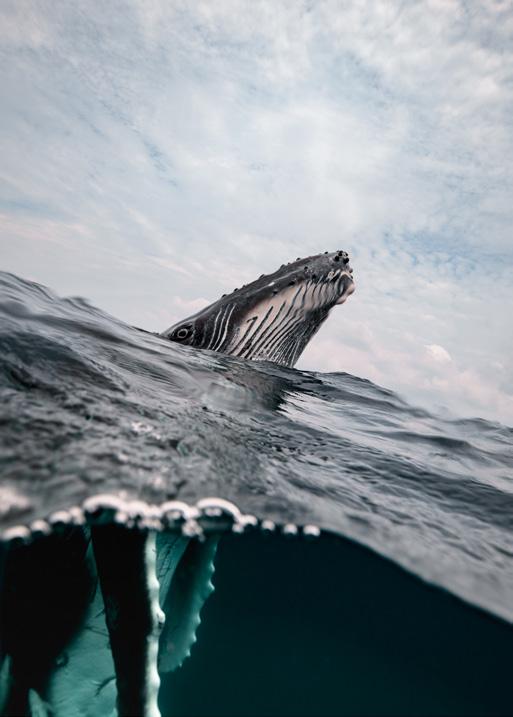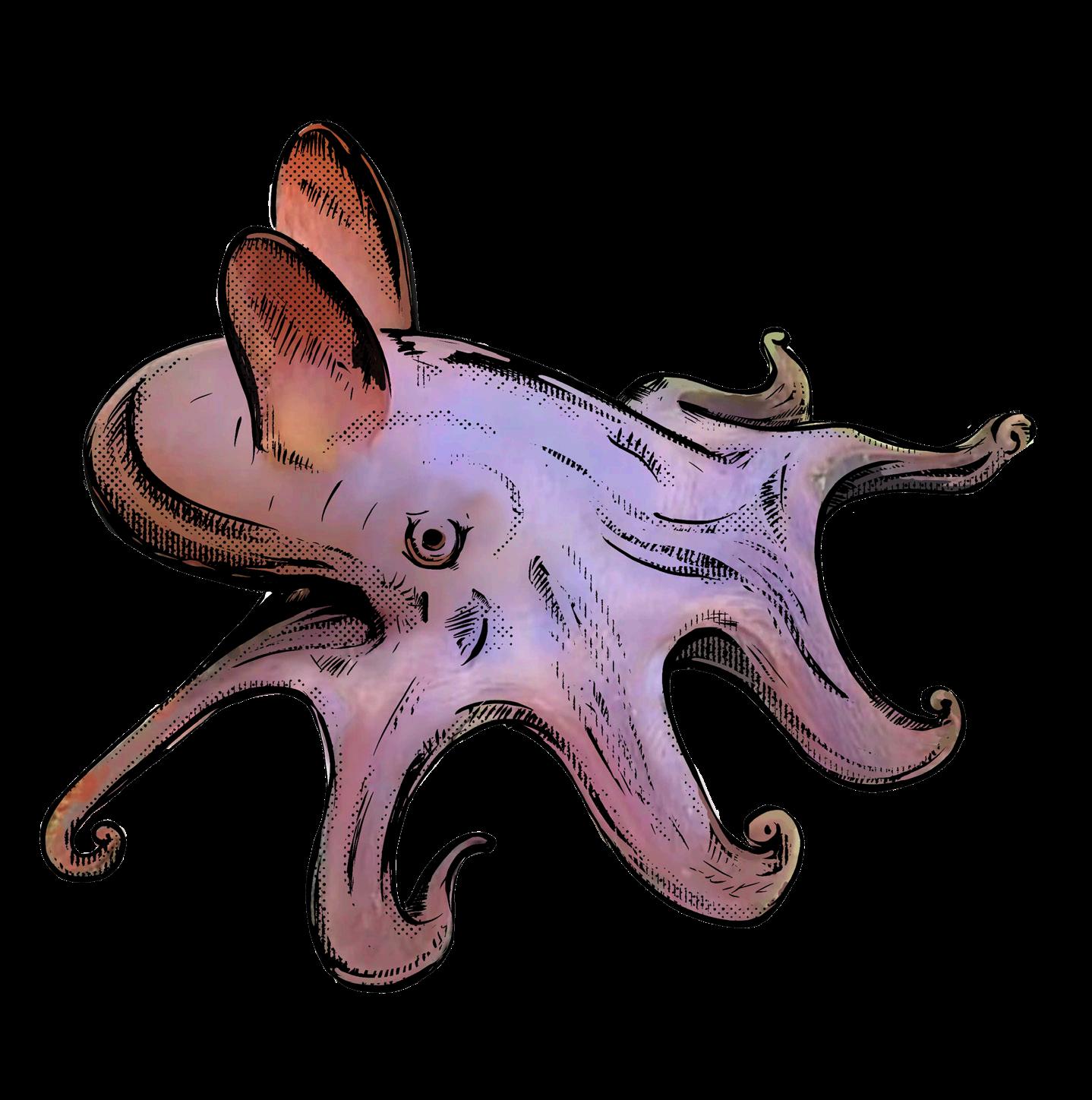DEEP SEA MINING IN THE ARCTIC LIVING TREASURES AT RISK
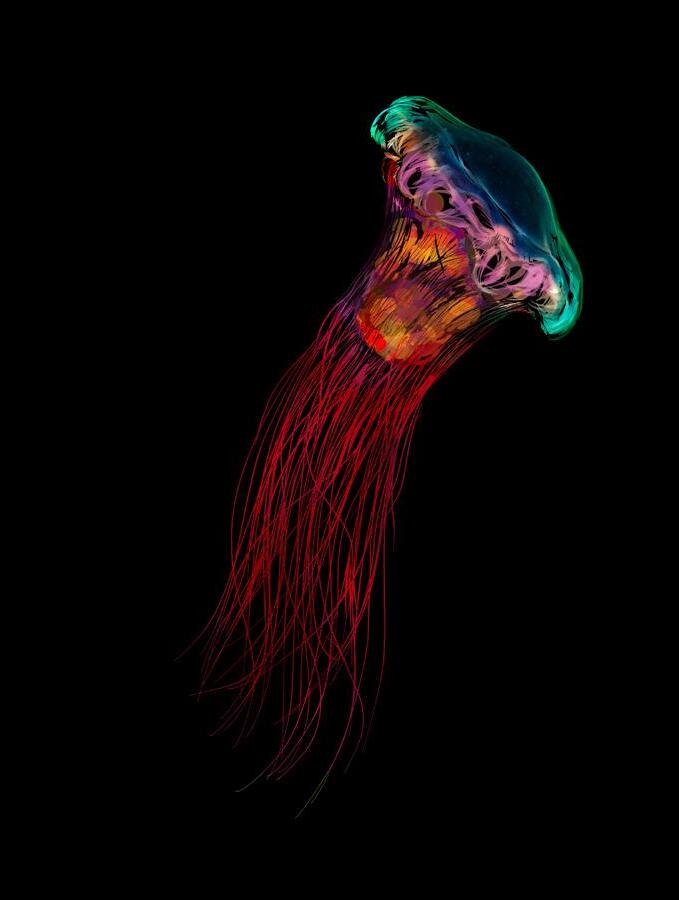
Additional
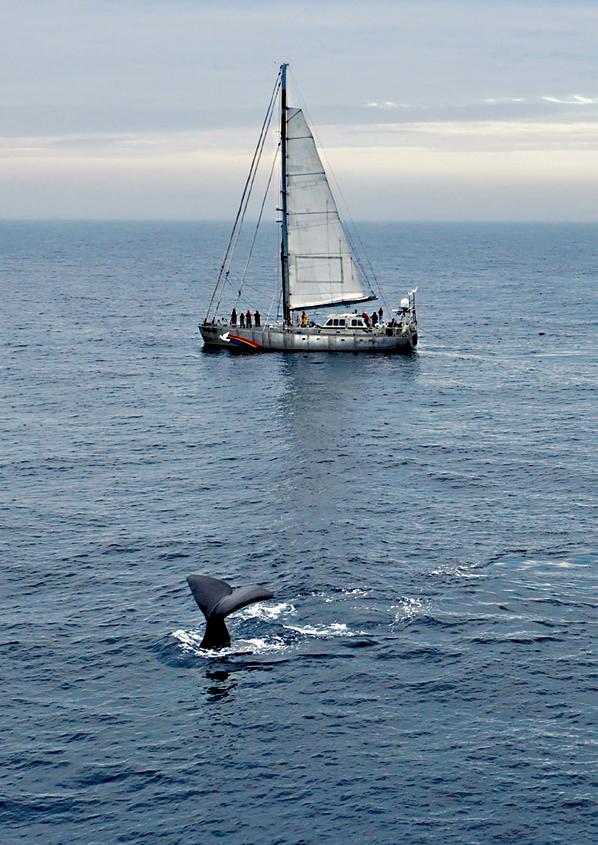


Additional

Mads Christensen Executive Director, Greenpeace International.
The Arctic is a unique and vital marine environment, home to one of the world’s most fragile and diverse ecosystems, crucial for global climate regulation and supporting a wide array of species found nowhere else on Earth. The recent decision by Norway to open up 281,200 km2 of its claim to an extended continental shelf to deep sea mining is putting ocean life and the livelihoods of those who depend on it at grave risk.
The remote offshore waters of the Arctic seas teem with life. Deep-diving sperm whales and northern bottlenose whales in their search for squid are among the animals that connect the surface waters with the deep ocean below. The underwater environment of the Mid-Atlantic Ridge is made up of a diverse mix of seamounts, ridges, canyons and extraordinary hydrothermal vent fields, the result of the volcanic activity that occurs where two tectonic plates rub up against each other. The spring explosion of phytoplankton fuels a complex and dynamic food web where tiny copepods and other zooplankton are fed on by numerous creatures. These include huge shoals of herring, mackerel
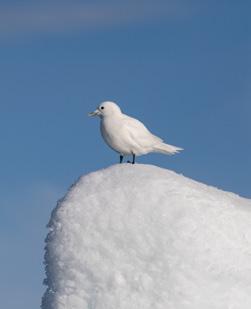
and blue whiting, and thousands of baleen whales that make their way north from the warm waters where they breed to make the most of the annual Arctic bonanza. It is also a seasonal migration route for globally important populations of seabirds.
Despite the absence of light, the marine life thousands of metres under the waves is remarkably diverse. A mosaic of sponge assemblages and coral gardens provide habitat for many invertebrate and fish species that utilise them as spawning, nursery and foraging grounds, and as areas of refuge.
The communities that live around the deep sea hydrothermal vent fields are even stranger: they are home to creatures such as stalked jellyfish, tube worm ‘forests’, fish that produce antifreeze and ‘hairy’ shrimps hosting colonies of bacteria that can convert toxic hydrogen sulphides and methane into energy.1 These are unique habitats with endemic species that can be found nowhere else on Earth, including ones that have yet to be scientifically described.
It is these vulnerable habitats that the Norwegian government wants to carve up with underwater robots
and other noisy machinery for the metals found in the manganese crusts formed on seamounts and the seafloor massive sulphide (SMS) deposits around hydrothermal vent fields.
Deep sea mining companies’ disregard for marine life and the warnings of scientists extends beyond Arctic ecosystems, more precisely in the Clarion-Clipperton Zone (CCZ), a vast area in the Pacific Ocean between Mexico and Hawaii where highly risky plans to extract polymetallic nodules are being pursued. A recent scientific study has revealed that these nodules may be playing a key role in producing oxygen in the deep sea without photosynthesis.2 This unexpected finding is indicative of how little we know about how deep sea ecosystems function. It has quickly influenced the political agenda, spurring calls for further investigation into the ‘dark oxygen’ phenomenon, and represents yet another reason why we must take a precautionary approach. Gathering the baseline data for deep sea ecosystems requires time, and deep sea mining is a dangerous gamble against it.
This report showcases much of what is known about the amazing marine life of the Arctic seas – but more than that,
it reveals how many questions there are still to be answered. This requires gathering more information about the distribution of species and habitats in the area, their ecosystem functions and the oceanographic conditions and how they might be impacted by any future mining operations. As Norway’s own Institute of Marine Research (IMR) has stated, the lack of baseline data means that it is impossible to comprehensively assess the full environmental impact of any proposed deep sea mining
there is growing evidence that any future deep sea mining operations will have multiple ‘extensive and irreversible, permanent and immitigable’ impacts on the marine ecosystem. 5 There is the distinct possibility of making species extinct even before scientists have had a chance to describe and catalogue them. And these impacts won’t be confined to the destruction of the seabed and associated benthic communities.
Sediment plumes generated at the
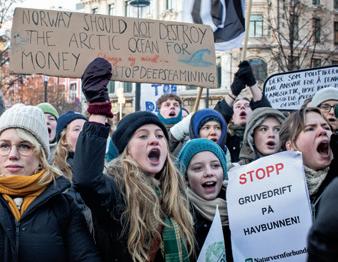
operations. 3 In the context of the rapid environmental changes, rising sea temperature and ocean acidification that the area is currently experiencing, the need for more baseline research is even more urgent. Enough knowledge is already available to understand that, as the Deep Sea Mining Science Statement puts it, ‘deep-sea mining would add to these stressors, resulting in the loss of biodiversity and ecosystem functioning that would be irreversible on multi-generational timescales’ 4 This statement is signed by more than 800 marine science and policy experts, and the list of scientists, governments, companies and further stakeholders warning against deep sea mining is constantly growing.
While the deep sea mining industry is being held at bay across the world,
seafloor and as discharge from vessels on the surface risk impacting on species beyond the mine site and in the water column.. Noise pollution will pervade the underwater world and disrupt the behaviour of whales and other creatures. Even the artificial lighting used is expected to interfere with ecosystem functions in ways that are only just being uncovered.
Then there is always the inherent risk of major accidents occurring with the use of new technology far from land, in an extremely tricky environment – there is, on average, one underwater volcanic eruption in Norwegian deep sea areas every single year.
The Norwegian government appears to be hellbent on extraction, which may seem surprising as so many other countries are heeding
the science and supporting the growing consensus on the need for a deep sea mining moratorium. In reality, Norway has put considerable effort into creating an image for itself as a leader on sustainable management in international forums, while continuing an aggressive extraction policy within its own waters, particularly as it relates to the oil and gas industry.
Criticism of the plans and the processes by which they are being implemented has come in a wide variety of forms from both domestic and international actors. For example, Norwegian fishermen are deeply concerned as to possible future impacts on their industry, and WWF Norway is mounting a legal case.
International commitments –namely the Convention on Biological Diversity’s Kunming-Montreal Global Biodiversity Framework ’s mission to halt and reverse biodiversity loss by 2030 and its target to protect 30% of the ocean by 2030 6 and the Global Ocean Treaty 7 that aims to safeguard the marine biodiversity inhabiting the high seas – signpost a different approach: one that confers protection on the marine ecosystems that, through various ecological processes, sustain us all.
Greenpeace urges the Norwegian government to listen to the multitude of voices that are opposed to deep sea mining, halt its plans and support a moratorium on deep sea mining globally. Norway should seize the opportunity to conduct further research into the ecological functioning of the Arctic waters, progress the initiative to establish a network of benthic marine protected areas (as described later in this report) and work with other countries in the region to apply the provisions of the Global Ocean Treaty to the overlying waters.
Now, when six of the nine planetary boundaries have been exceeded, 8 is not the time to be opening up a new frontier to extraction, but one when we should all be doubling down on doing what is needed to safeguard the wildlife and ecosystems that we share this wonderful blue planet with.
The seabed of the Arctic Mid-Ocean Ridge (AMOR) opened up by Norway for deep sea mining exploration and future extraction is part of Norway’s claim to an extended continental shelf, but lies outside the Norwegian exclusive economic zone (EEZ). It is situated north of the Arctic Circle and almost entirely outside of the maximum sea ice extent. Volcanic activity in the area has resulted in raggedy crusts that are heterogeneous in character, with features including seamounts, ridges and canyons. Norway plans to mine for minerals such as manganese, cobalt, copper, nickel and rare-earth metals found in these manganese crusts on seamounts and sulphide deposits on active, inactive or extinct hydrothermal vents. All the hydrothermal vents on the AMOR are relatively recent discoveries, with the most recent vent system, Deep Insight, reportedly being identified in 2023. 9 Located at depths of 1,000 to 4,000 metres, where no light penetrates, these areas harbour surprisingly diverse marine life and biological communities, making them both scientifically significant and ecologically fragile.
Deep sea species commonly exhibit a set of fundamental biological characteristics and life history traits – slow growth, high or extremely high longevity, late sexual maturity and low fertility – that make them inherently vulnerable to disturbance and habitat damage. Habitat-forming animals such as deep sea sponges and corals, sea pens and sea fans create what have been referred to as underwater ‘forests’ that are classified as vulnerable marine ecosystems (VMEs). 10 Hydrothermal vents provide remote and isolated habitats that support unique and vulnerable biological communities. The deeper hydrothermal vents host chemosynthetic ecosystems in which microbes use chemical energy to create biomass that is consumed by other organisms. Some of the species found at the Jøtul vent field on the Knipovich Ridge include armoured crustaceans, ‘hairy’ shrimps and stalked jellyfish, as well as ‘forests of tube worms, fish with antifreeze proteins in their blood and animals living with bacteria that can turn toxic chemicals into energy’. 11
• Deep sea species are characterised by slow growth, high or extremely high longevity, late sexual maturity and low fertility. This makes them inherently vulnerable to disturbance and habitat damage. Therefore, habitats formed by animals such as deep sea sponges, stony corals, sea pens, sea fans, lace corals and black corals are classified as VMEs.
• Twelve species of marine mammals are regularly found in the area where Norway plans to start deep sea mining: minke whale, humpback whale, fin whale, blue whale, bowhead whale, northern bottlenose whale, sperm whale, orca, narwhal, white-beaked dolphin, harp seal and hooded seal.
• The strong ocean currents and unique underwater topography in the Nordic Seas create the conditions necessary for the spring phytoplankton bloom, which drives the region’s high biological productivity. This bloom supports a vast biomass of zooplankton, which sustains many species, including three key small pelagic fish: herring, mackerel and blue whiting. These pelagic fish species are predated on by larger marine animals and are also targeted by fishermen, who see Norway’s plans as a threat to fishing populations.
• The lack of certain baseline data regarding the biodiversity and associated conditions such as the prevailing bottom currents mean that it is impossible to comprehensively assess the scale of the environmental damage of any deep sea mining operations.
• The area is important to many globally significant populations of seabirds, especially as a migration route. Many of these populations are in decline, particularly the Arctic species.
• The Nordic Seas are a major transition zone where warmer, saltier Atlantic waters meet colder, fresher waters from the Arctic. They are undergoing rapid environmental change, getting warmer and more acidified.
Figure 1. Norway’s proposed area for commercial exploitation of seabed minerals, including applied licence blocks


A schematic showing the potential impacts of deep-sea mining on marine ecosystems. Not to scale.
Deep sea mining is a destructive industry that will lead to removal of deep sea habitats and loss of biodiversity. Evidence is accumulating that the potential impacts of deep sea mining are likely to be extensive, permanent and immitigable. The extent of the damage that sediment plumes could cause is unknown, but strong currents could mean they would be extensive. The deep-diving northern bottlenose whales and male sperm whales that target the Arctic squid, Gonatus fabricii, in the deep waters rely on sound to forage successfully, and they may be particularly sensitive to noise pollution.
The impacts of deep sea mining include, but are not limited to:
• Direct removal of seafloor habitat and organisms
• Alteration of substrate and its geochemistry
• Modification of sedimentation rates and food webs
• Creation of changes in substrate availability, heterogeneity and flow regimes
• Release of suspended sediment plumes
• Release of toxins and contamination from extraction and removal processes
• Noise pollution
• Light pollution
• Chemical leakage from mining machinery and equipment
• Unintentional transport of species (in ballast water or on equipment) to a different location
The Norwegian government’s opening of its claim to an extended continental shelf to deep sea mining has led to extensive criticism both domestically and internationally, including from its own environmental agency and the European Parliament. 12 The Norwegian government must stop all deep sea mining activities and instead support a moratorium on deep sea mining globally, as more than 30 governments have already done. To secure a future for the wealth of biodiversity in these Arctic waters, the Norwegian government should promote their protection as part of a global network of ocean sanctuaries, off limits to all extractive activity. In order to meet its international commitments, such as those enshrined in the Kunming-Montreal Global Biodiversity Framework, the Norwegian government should establish an effective and fully representative network of ocean sanctuaries covering at least 30% of its jurisdiction. It should also work with others to ensure that equivalent protection is conferred for the overlying international waters and that the other ambitions of the Global Ocean Treaty are met. Allowing scientific research into the deep sea is paramount in order to highlight its central importance for the ocean and the climate, and species protection must be supported. The destruction of these ecosystems is unnecessary. Rather than pushing for the exploitation of the deep sea frontier to meet onshore raw material demand, the Norwegian government must promote the circular economy through sustainable product design, right to repair and efficient recycling.
ABMT Area-Based Management Tools
AMOR Arctic Mid-Ocean Ridge
BBNJ Biodiversity Beyond National Jurisdiction
CBD Convention on Biological Diversity
CLCS Commission on the Limits of the Continental Shelf
EBSA Ecologically or Biologically Significant Area
EEZ Exclusive Economic Zone
EIA Environmental Impact Assessment
ICES International Council for the Exploration of the Sea
IFBs Legal instruments and frameworks and relevant global, regional, subregional and sectoral bodies
IMO International Maritime Organisation
IMR Institute of Marine Research
IPBES Intergovernmental Science-Policy Platform on Biodiversity and Ecosystem Services
IUCN International Union for the Conservation of Nature
IWC International Whaling Commission
MGR Marine Genetic Resources
MPA Marine Protected Area
NEAFC North-East Atlantic Fisheries Commission
NPD Norwegian Petroleum Directorate
OSPAR The Convention for the Protection of the Marine Environment of the NorthEast Atlantic
ROV Remotely Operated Vehicle
SMS Seafloor Massive Sulphides
UNCLOS United Nations Convention on the Law of the Sea
VME Vulnerable Marine Ecosystem
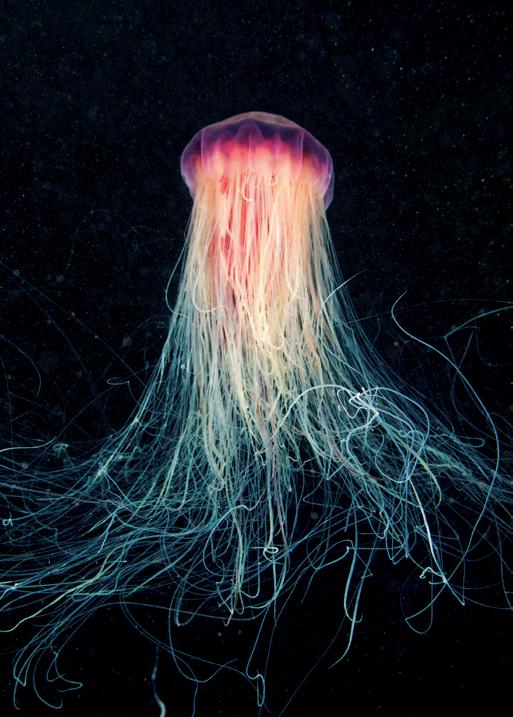
There is a growing consensus that deep sea mining poses a huge threat to marine wildlife and the functioning of marine ecosystems wherever it is proposed in the ocean. Consequently, the Norwegian government’s decision to open up an area of its continental shelf to deep sea mining exploration with a view to possible extraction in the future has been received with great consternation, both nationally and internationally.
This report aims to show what is at stake by presenting an overview of what is known about the Arctic biodiversity inhabiting the area, identifying associated knowledge gaps, investigating the vulnerability of species and habitats to the expected impacts of any future mining operations and examining the policy context, including the need to confer effective protection. To achieve this, a review of the scientific literature was undertaken and the policy context researched.
The information and analysis presented in this report point to a way forward that will ensure that the remarkable marine life of the proposed mining area is safeguarded for this and future generations.
On 9 January 2024, the Norwegian Parliament (the Storting) endorsed a Norwegian government proposal and voted to authorise the opening up of substantial parts of the Norwegian continental shelf and Norway’s claim to an extended continental shelf to industry for deep sea mining exploration. 13 14 The decision will allow the Norwegian government to issue exploitation licences, but before any mining can start, the Norwegian Parliament will be required to vote again and give its approval to the plan of work of the mining project. 15 , 16
The area of seabed opened up for deep sea mining exploration by the Norwegian government is located beyond Norway’s 200 nm EEZ, and much of it lies on Norway’s claim to an extended continental shelf. It covers a massive 281,200 km2 of mid-ocean ridge (larger than the total land area of the United Kingdom) and is located between Svalbard and Jan Mayen Island.
In 2006, Norway submitted a claim to the Commission on the Limits of the Continental Shelf (CLCS). 17 The CLCS made its recommendations in 2009, and consequently Norway’s continental shelf was extended to include areas in the Barents Sea, the Arctic Ocean and the Norwegian Sea. Significantly, Norway’s claim to an extended continental shelf now includes seabed that underlies the high seas part of the Norwegian Sea, known as the ‘Banana Hole’. Under the United Nations Convention on the Law of the Sea (UNCLOS), Norway has the exclusive right to explore and exploit natural resources on its extended continental shelf, once established, but its sovereign rights do not apply to the water column above 18
On 26 June 2024, the Ministry of Energy presented a proposal for public consultation that sets out the areas where the companies will be able to apply for exploitation licences. 19 The 386 blocks span approximately 38% of the area that was opened in April. The public will be able to respond on this first licensing round until 26 September 2024.

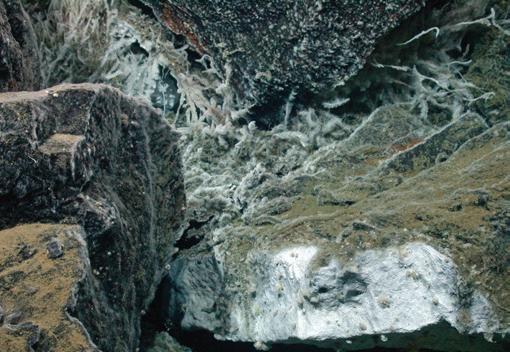
The mineral deposits found on Norway’s claim to an extended continental shelf are the result of the dynamic geology and hydrography of the area – factors that also create unique habitats that host diverse, vulnerable and often unique biological communities.
The area opened up for deep sea mining exploration and mapping is known as the Arctic Mid-Ocean Ridge (AMOR), which itself is part of the 65,000 km mid-ocean ridge, an underwater chain of mountains that snakes its way through every ocean in the world. Ridges occur where two tectonic plates are moving apart. Along these divergent plate boundaries, earthquakes and volcanic activity cause molten rock to spew from the resulting fissures, creating new ocean crust at the ragged edge of the plates.
In the Norwegian Sea, the ridges are considered ‘ultraslow-spreading’, with the plates moving away from each other at a rate of about 15 mm per year. 20 Such slow-spreading ridges display a steep, irregular topography and are relatively narrow compared to faster-spreading ridges, such as those found in the
East Pacific Rise, which present a much wider profile and gentler slopes. 21 Water depths in the Norwegian Sea vary from 100 to 4,000 m, with the majority deeper than 1,500 m. The shallower waters are located around Jan Mayen and above some of the taller seamounts.
There is much underwater volcanic activity along the spreading axis where new seabed is being formed, and on average one underwater volcanic eruption occurs in Norwegian deep sea areas every year. 22 It is this volcanic and associated hydrothermal activity that has resulted in the formation of manganese crusts and sulphide deposits – two of the three types of polymetallic mineral deposits of interest to the deep sea mining industry – on the Norwegian seabed. The Norwegian Petroleum Directorate (NPD) has assumed that conditions for the formation of manganese nodules – the third type of polymetallic mineral deposit of interest to the deep sea mining industry – are not present on the Norwegian continental shelf, due to a high sedimentation rate. 23
Seafloor massive sulphides (SMS) are associated with both active and inactive hydrothermal vents located along the ridges of the Norwegian continental shelf (see Figure 2).
Hydrothermal vents occur when cold seawater seeps into cracks in the seafloor and becomes superheated by the underlying hot magma, sometimes up to a temperature of 400 o C. At these temperatures chemical reactions occur and minerals are pulled out from subsurface rocks, dissolved and concentrated. When the percolating mineral-rich waters are blocked in their downward path, they spew back
out through vent openings. As the particle-laden vent fluids come into contact with near-freezing seawater, the fine-grained minerals cool and precipitate, forming chimneys known as ‘smokers’.
At the deep, northern parts of the AMOR, the vent fields are made up of ‘black smokers’, whereas the cooler vents located in the shallow waters around Jan Mayen are made up of ‘white smokers’. 24 The black smokers derive their colour from deposits of black iron sulphide, whereas white smokers owe their colour to deposits of barium, calcium and silicon.
Active vents, where there is ongoing outflow of hightemperature fluid from underground magmatic activity, may remain active for thousands of years before they die out and leave the sulphide mounds that constitute the majority of the recoverable ore. Typically, SMS deposits contain high concentrations of metals such as copper, zinc, lead, cobalt, silver and gold. 25 The exact composition of the deposits depends on a number of factors, including the temperature, depth and the mineralogy of the underlying rock through which the hydrothermal fluid flows.
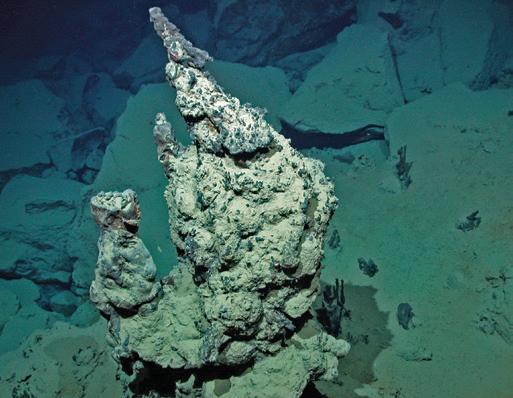
Manganese crusts form as a result of minerals precipitating out of hydrothermal effusions as they cool and react with seawater and the rocky substrates found on the slopes and summits of seamounts. While the minerals are precipitating everywhere, crusts won’t form if there is sedimentation, so slope is one of the factors that determines whether a crust will form. A slope of 20o or more is required, but if the slope is too great the crust will fall off. The rate at which crusts form is very slow – typically about 1 mm every 100,000 years. Hence, the thickest crusts are to be found on the
older seamounts and ridges further away from the spreading axis. If conditions are relatively stable, crusts as thick as 20 cm or more may be found on the steep slopes of seamounts that are estimated to be 25–30 million years old
The composition of the manganese crusts will vary with the chemistry of the hydrothermal effusions, and as well as manganese and cobalt they may contain precious rare-earth elements. Rare earths are in high demand by industrial users on account of their unusual magnetic, luminescent and electrical properties.
Many of the aspects around raw
material supply and deep sea mining are examined in the 2023 OekoInstitut report The Rush for Metals in the Deep Sea: Considerations on Deep-Sea Mining, which, among other things, challenges the assumptions on mineral demand made by the advocates of deep sea mining, especially in the light of rapidly changing battery technologies. 26 The report also emphasises the urgent need to shift towards building a circular economy and significantly reducing the need for raw materials by various means, including fostering the reuse and repurposing of manufactured products.
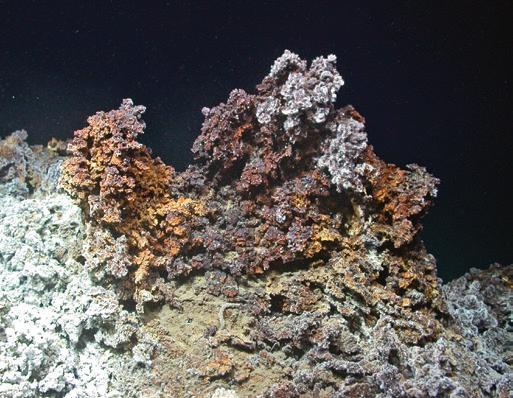

Source:
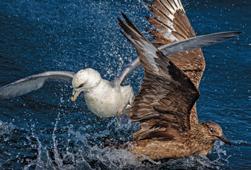


The area opened up for deep sea mining exploration is situated in the Nordic Seas – the collective name given to the Greenland, Iceland and Norwegian Seas, which are all located west of Norway and east of Greenland. The opened-up area sits wholly above the Arctic Circle but is almost entirely outside the maximum sea ice area. It also lies within the International Council for the Exploration of the Sea’s (ICES) 27 ‘Norwegian Sea’ ecoregion, which covers the Norwegian Sea and part of the Greenland Sea. 28 Furthermore, the area falls within Region I (Arctic Waters), the most northerly of the regions covered by the Convention for the Protection of the Marine Environment of the North-East Atlantic (OSPAR). 29
The major currents in this transition zone are shown in the map in Figure 3: the Norwegian Atlantic Current is a poleward extension of the Gulf Stream, and the North Atlantic Current carries warm, saline water from the North Atlantic to the Barents Sea and Arctic Ocean, while cold, fresher Arctic waters flow down from the north. This physical oceanography demonstrates the Norwegian Sea’s interconnectedness with the colder waters to the north and how conditions in one region affect the other.
These currents are very important in driving important ecological processes, and fluctuating sea temperatures in the region have been seen to result in changes in primary production and zooplankton communities. 30 An important feature of this region is the Arctic Front, where the boundary between the two distinct warm and cold water masses is sharpest. The Arctic Front is most pronounced near the Faroe Current in the southwest Norwegian Sea and along the Mohns Ridge, and like other ocean fronts it is highly biologically productive, supporting for example large feeding schools of pelagic fish. 31
In 2023, a panel of 15 experts from the IMR and the Norwegian Institute for Nature Research published an assessment of the pelagic ecosystem of the Norwegian Sea. 32 The systematic analysis conducted for the Norwegian Environment Agency found that the ecosystem exhibits some impacts from human pressures, but acknowledged that more substantial impacts may not have been picked up because important indicators are lacking and many of the time series for key data are too short. The report states, however, that the increase in sea water temperature seen in the 70-year time series is clear evidence of climate change. There is also evidence of increasing acidification. The assessment notes that such changes may already be affecting primary production and zooplankton, but that there is insufficient data to determine trends. It also notes that overfishing has led to decline in some fish populations and that there has been a decline in some seabird populations.

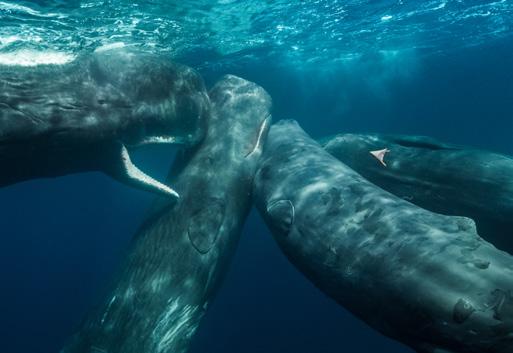
Acidification of the Nordic Seas is of grave concern, having advanced further than the global average. 33 Significant pH reductions have been recorded throughout the upper layer (0–200 m) of the Nordic Seas (except in the Barents Sea Opening), and in some areas acidification is detectable down to 2,000 m, due to deep water formation and spreading of these water masses at depth. 34 As the waters of the Nordic Seas become more acidified, there will be impacts to species, ecosystems and ecosystem functioning as a result of changes to organisms’ structure, distribution and ability to function. 35
A description of the fisheries taking place in the Nordic Seas is beyond the scope of this report, but a good overview is available from ICES. 36 The Northeast Atlantic pelagic fish – herring, mackerel and blue whiting – support large-scale fisheries in all major fishing nations in the region, and while the latest scientific advice (for 2023) for these three pelagic species indicates that stock biomasses are currently healthy, the lack of an effective management regime means that they have been caught at above the sustainable levels advised by ICES for many years. 37 Fishing pressure on herring and blue whiting is higher than the precautionary reference points, which is of concern when variations in environmental conditions and fishing pressure can both cause big fluctuations in the biomass of these species.
Most of the area opened to seabed mining exploration and mapping has depths of between 1,000 and 4,000 m, and the seabed lies within the aphotic/bathypelagic depth range, where no sunlight penetrates. With the exception of primary production associated with a few hydrothermal fields, nutrient availability in the aphotic zone is limited to particles (marine snow) that sink to depth from the productive shallow-water layers above. There are some shallower areas extending into the mesopelagic zone (twilight zone), at 200 to 1,000 m depth; these occur north and south of the Jan Mayen fracture zone and along the Mohns Ridge to the northwest.
Within the designated area, both soft bottoms and a substantial proportion of hard substrates exist, the latter taking the form of scattered rocks, volcanic ridges, fault slopes and seamounts. This heterogeneity means that life in the deep sea is surprisingly diverse, with various
combinations of biotic and abiotic conditions leading to the evolution of different deep sea biological communities, including those associated with active and inactive hydrothermal vents, coral gardens and sponge beds. 38
The following sections outline what is known so far about these communities in the area opened up by the Norwegian government. It is important to note that deep sea species commonly exhibit a suite of life history traits – slow growth, high or extremely high longevity, late sexual maturity and low fertility – that make them inherently vulnerable to disturbance and habitat damage. For this reason, habitats formed by animals such as deep sea sponges, sea pens and sea fans, and stony, lace and black corals, which increase the threedimensional complexity of the seabed, are classified as vulnerable marine ecosystems. 39 Hydrothermal vent communities exhibit the same life history traits and characteristics as coral gardens and deep sea sponge aggregations, which means that the Food and Agriculture Organization of the United Nations has recognized them as VMEs hosting VME species. 40 41 42
The hydrothermal vent fields and the manganese crusts found on seamounts that are of interest to the advocates of deep sea mining do not exist in isolation, but are key components of the mosaic of other important habitats that comprise the larger ridge system. The quasi-linear nature of ridge systems with their along- and cross-axis bathymetric complexity, together with their complex and turbulent flow environments, shape the biological communities that inhabit them and make these communities very different to those found in the abyssal plains that comprise much of the deep sea. 43
How these factors affect habitat variability and faunal zonation is illustrated by the findings of a study conducted along the Ægir Ridge, located in the Icelandic EEZ and therefore near to the proposed mining area. 44 By analysing images obtained using a remotely operated vehicle (ROV) and epibenthic sledge, researchers were able to determine patterns of biodiversity associated with different depth gradients and a ‘biological canyon effect’ that led to increased densities of filter feeders. They also found a number of areas dominated by sponges and soft corals characteristic of the Arctic region that clearly constitute VMEs. The researchers believe that some of the ridge system would fulfil the Convention on Biological Diversity’s (CBD) criteria for an Ecologically or Biologically Significant Area (EBSA). It seems likely that if other areas further north were studied in the same way, similar patterns of high biodiversity in the benthos would be revealed.
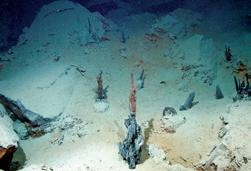
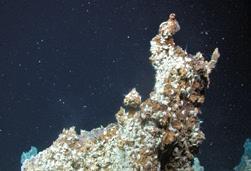
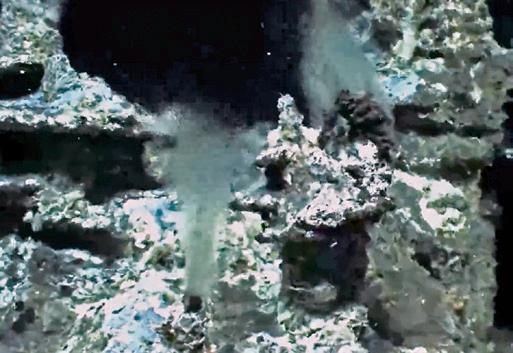
Hydrothermal vents are ‘globally diverse, vulnerable, rare, remote, and isolated habitats’ that support unique biological communities. 45 Chemosynthetic bacteria form the basis of vent ecosystems and thus support large populations of various invertebrates, including molluscs, crustaceans and annelid tube-dwelling worms. 46
As can be seen from Figure (on page 4), since 2005 a number of active hydrothermal vents and inactive vents with SMS deposits have been found along the spreading axis at Mohns Ridge, Knipovich Ridge and the northern part of the Kolbeinsey Ridge. These range from relatively shallow vents (140–700 m) at the Jan Mayen and Seven Sisters vent sites to much deeper vents (2,400–2,200 m) at the Loki’s Castle and Ægir’s Kilde sites. A mineral exploration survey commissioned by the Norwegian Petroleum Directorate in 2018 identified a new active site, Fåvne, more than 3,000 m deep on the Mohns Ridge between the Loki’s Castle and Ægir’s Kilde vent sites. 47 In addition to the active sites, two inactive sites have been located: Copper Hill (900 m depth) on the central Mohns Ridge and Mohns Treasure (2,600 m), a massive sulphide deposit that is located at the edge of an inner rift wall, 30 km southwest of Loki’s Castle.
In July 2022, another vent field, the Jøtul hydrothermal field, was discovered in the 500 km area between Svalbard and Greenland. 48 The Jøtul field consists of a wide variety of fluid escape sites and inactive and active mounds, and differs from the other sites by being associated with a fault in an adjacent rift valley rather than with the volcanic ridge itself. According to Green Minerals, a deep sea mining company, another vent site, Deep Insight, was discovered in 2023. 49 Located west of Copper Hill at a depth of just below 1,000 m, the company describes Deep Insight as one of the largest on Norway’s continental shelf and a candidate for future mining. No further information about the site could be found.
As well as differences in depth, these sites are associated with different geological environments and exhibit large differences in water temperature and water chemistry, factors that influence the composition of associated biological communities. 50
73°34′0.0”N
Loki’s Castle, situated on the crest of an axial volcanic ridge with low volcanic activity, was the first black smoker to be discovered on the AMOR, in 2008. An unusually large hydrothermal deposit found at the site points to it being an extensive and long-lived hydrothermal vent system. Initial research revealed that the vent fauna was different from the fauna found at the vents further south along the MidAtlantic Ridge, where shrimps, large bivalves and crabs are abundant. 51 This may be due to migrational barriers preventing the establishment of the more southerly species in Arctic waters.
A later study employing photomosaic methods has helped characterise the biological communities found at Loki’s Castle. 52 This study established that there are significant differences in density, diversity and distribution of the larger benthic species between diffuse venting areas, focused venting areas and peripheral areas of the wider site. The highest diversity and density are found at the diffuse venting site called the barite field.
In 2024, Nature published a study aiming to provide the first comprehensive inventory of the fauna at Loki’s Castle vent field and present a first insight into the food web of the vent community. 53 The researchers found that chemosynthetic primary production by organisms at the barite field fuels the food web. As has been the case with many of the hydrothermal vents investigated to date, scientists have discovered a number of new species at the site. Thus far, 10 new species are awaiting formal description; most are hydrothermal specialists
A key species in the food web is the tube worm Sclerolinum contortum, which, unusually for a ventassociated species, has a cosmopolitan distribution that includes both polar regions. 54 S. contortum provide structure, forming ‘bushes’ that act as threedimensional habitat for many species of crustaceans, snails and other small animals, and are considered a foundation species.
72°20′38.4”N 01°33′18.0”E
In 2020, scientists taking part in the Vent and Seep Fauna Project visited Ægir’s Kilde on a research cruise. They found ‘multiple chimneys with white or shimmering, warm fluids streaming out’. 55 Tiny snails and amphipods, typical of other AMOR sites, were found at the base of the chimneys, and it is thought that the species at this site are similar to those present at Loki’s Castle. Eelpouts, a species of fish that feeds on the amphipods, were also observed.
72°45′0.0”N 03°50′0.0”E
Fåvne has a distinctly different chemistry to the Loki’s Castle and Ægir’s Kilde vent fields. 56 The site consists of both active and inactive vents. As yet, it is not well studied; preliminary research into the food web shows linkages between the species living there, but not with the active hydrothermal venting (although this may be a consequence of not yet having found the links). The vents can still have important ecosystem functions, however, including providing substrates for sessile species such as filter-feeding sponges. The destruction of these vents could result in species being removed permanently, leading to cascading effects on the food web and diminishing the ecosystem. 57
71°9′0.0”N 12°47′24.0”W
The shallower white smoker vents at the Jan Mayen and Seven Sisters (Syv Søstre) vent fields support communities that are quite different from the fairly typical endemic vent communities seen at Loki’s Castle and Ægir’s Kilde. Notably, they are much more biodiverse than communities at the more northerly vents, with 180 taxa recorded at the Jan Mayen field. Of these, 138 were
found in the diffuse outflow area at the Troll Wall (Trollveggen), a very hydrothermally active ridge that is part of the vent field. 58
The Jan Mayen vents host white bacterial mats, dense aggregations of the crinoid Heliometra glacialis and basket stars Gorgonocephalus eucnemis and generally few sedentary animals. Calcareous sponges were found amongst the sponges that are present, and they may be pioneers among the sessile species settling on these vents. 59
At the bases of the active chimneys of the Jan Mayen and Seven Sisters vent fields, dense clusters of anemones occur. A study on anemones found at hydrothermal vents in the Indian Ocean determined that they possess a large number of genes geared towards producing proteins that move metals into a cellular area where they won’t harm the animal – an example of how deep sea vent organisms have evolved to withstand the extreme conditions of their environments. 60
The Jøtul hydrothermal field, named after a giant in Norse mythology, was discovered in 2022 by researchers who sent an ROV down 3,000 m to investigate after having detected indications of hydrothermal activity in the water column. On the seafloor, they discovered a black smoker and also ‘warm fluid leaks associated with white precipitates, microbial flocs and filaments, and many small organisms’. 61
The precipitation of chemicals from other vents has created mounds on the seafloor that are sometimes several metres high. One particularly diverse hydrothermal structure made up of multiple chimneys and protruding flanges was named Yggdrasil, after the Norse tree of life that was believed to connect the nine realms of the cosmos.
In spring/early summer 2024, the Ocean Census Arctic Deep Expedition – a collaborative venture between the University of the Arctic, Tromsø, Norway, REV Ocean, and Ocean Census – conducted some further investigations into the biodiversity
of the Jøtul hydrothermal field. The expedition collected hundreds of specimens for later detailed analysis. Among the animals documented by the researchers were ‘shrimps covered in hair-like bacteria feasting on methane, stalked jellyfish resembling underwater flowers, armoured crustaceans, forests of tube worms, fish with antifreeze proteins in their blood and animals living with bacteria that can turn toxic chemicals into energy’. 62
The discovery from the expedition that has most excited the researchers so far is that of the ‘unusual pairing of a stalked crinoid and octocoral’ found at a depth of 2,203 m. The coral was found attached to the crinoid as an epiphyte, comparable to lichen growing on a tree. This species is likely to be new to science. Talking about the discovery in a specially made video for the International Day of Biological Diversity, Professor Alex Rogers said, ‘Every new species we find has a particular function in the ocean. When we lose species, we lose those functions and eventually, it’s us who are affected.’63
As is generally the case worldwide, little is known about the ecology of inactive vents situated in the area opened up to deep sea mining by the Norwegian government. 64 65 There is a paucity of information about which species live in these habitats, and even less is known about what their functions are for ocean health.
A 2020 paper sets out a proposed set of criteria to distinguish active, inactive and extinct vents. 66 The authors describe active vent fields as currently exhibiting fluid flow above ambient seawater temperatures, inactive vent fields as fields that are not currently exhibiting fluid flow but may potentially become active again and extinct vent fields as ones that are not expected to become active again.
It is important to note that while inactive vents and deposits may not host chemosynthetic macrofauna, they do host important and vulnerable communities.
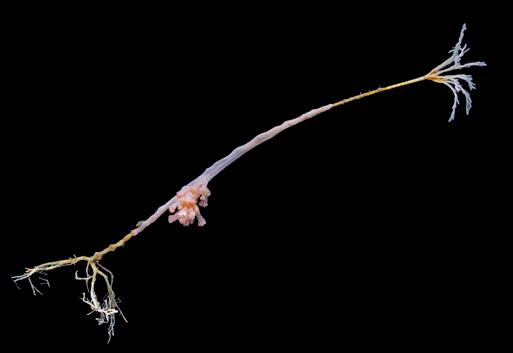
73°44′N 07°27′E
Mohns Treasure is an extinct vent field that has been investigated. Employing ROV photo transects and sampling, researchers have identified 46 species, with different fauna characterising the areas that are covered by sediment to those occupying rocky outcrops and ridges. 67 Large fields of stalked crinoids are distributed over the areas of sediment, whereas sponges and associated fauna dominate the hard substrates. Common species include siliceous sponges such as Lissodendoryx complicata, Hymedesmia sp., calcareous sponges such as Brattegardia spp., glass sponges and carnivorous sponges. This deep sea assemblage is distinct from that found in the shallower areas around Jan Mayen.
Seamounts are often ‘hotspots’ of biodiversity, and with their combination of exposed hard substrates and
associated current conditions they are often conducive to the development of dense assemblages of filterfeeding organisms such as corals and sponges. 68 Cold-water coral and sponge assemblages provide habitat for many invertebrate and fish species, functioning variously as spawning, nursery and foraging grounds, areas of refuge and substratum for certain sessile species.
The knowledge of the biodiversity and ecological functioning of seamounts in the Nordic Seas ecoregion is limited, with studies occasionally focusing on the Vesterisbanken seamount, which is located in the Greenland EEZ, but more frequently on the Schulz Bank seamount ecosystem, which is located in the transition zone between the Mohns and Knipovich Ridges and so falls in the area opened to mining. 69 Two other banks associated with the Mohns Ridge, the Myrseth Bank and the Louise A. Boyd Bank, have been named and mapped by hydrographic surveys, but no information on the biological
communities inhabiting these areas could be found.
70
73°52’0”N 7°30’0”E
The Schulz Bank hosts a high diversity and biomass of benthic megafaunal communities, predominantly sponge grounds, with different species found at different depths. Taxonomic knowledge of the sponge fauna in the area is very limited, as much of the research has involved the analysis of video footage.
Utilising an autonomous underwater vehicle, scientists have undertaken some fine-scale (<10 m) survey work on the spatial distribution of species inhabiting the summit (depth: 577–600 m) of the Schulz Bank. 71 Other than the odd boulder, there is little exposed rock on here; rather, it is covered in soft sediment and in places a mat of accumulated spicules – the skeletal remains of dead sponges – that form habitat for other species. In some places the spicule mats have built up to depths of 20 cm.
The survey revealed that the primary structure-forming sponge species Geodia parva and Stelletta rhaphidiophora were distributed evenly throughout the sample area, whereas some species, including Lissodendoryx complicate, were patchier in their distribution, displaying clear fine-scale spatial preferences. Other sessile species that have been recorded in large numbers among the sponge grounds include tunicates (Ascidiacea spp.), anemones (Actiniaria spp.) and the soft coral Gersemia rubiformis. Moving among the sessile filter feeders, the researchers found various starfish, brittle stars and sea urchins, as well as deepwater shrimps in the genus Bythocaris. They were also able to observe how several demersal (bottom-dwelling) fish species utilised the sponge grounds. Roughhead grenadier (Macrourus berglax), Greenland halibut (Reinhardtius hippoglossoides) and Arctic skate (Amblyraja hyperborea) were all uniformly distributed in the study area. The proliferation of egg capsules of the ice skate suggests that the Schulz Bank is a spawning and nursery area for this species.
While much attention has been focused on the sponge grounds situated on the summit of the Schulz Bank, a 2023 study based on extensive video footage collected by an ROV in 2017 and 2018 has identified five distinct biotopes, or biological
communities, on the seamount. 72 These occur at depths ranging from 580 to 2,700 m and include two dominated by large structure-forming sponges. Changes in the biotype occur with changes in depth, gradient and substrate. The sponge-dominated communities located on the summit and lower slope were found to be denser and more diverse compared to the communities located on the upper slope and seamount base. With the finding that the bedrock walls on the lower slopes are home to a thriving assemblage of organisms, this research challenged the previous assumption that the community on the summit of the seamount would be the most dense and diverse.
Some research has been conducted to understand the environmental factors that enable the sponge grounds to thrive on the summit of the Schulz Bank. Researchers have concluded that the high abundance and diversity of sponges found at the seamount summit is probably due to a combination of factors that result from interactions between seamount geomorphology, the hydrodynamic regime and water column structure.73 In consequence, the summit is situated within relatively nutrient-rich waters, regularly flushed by Norwegian Arctic Intermediate Water that is richer in oxygen and slightly warmer. This, together with the occurrence of elevated levels
of suspended particulate matter and oscillating currents, is likely to enhance food supply and prevent the sponges from being smothered by sediment. Furthermore, the detection of elevated chlorophyll concentrations above the summit may indicate that the circulation pattern around the seamount is enhancing particle retention.
Another study has investigated the relationship between the environmental conditions of the Schulz Bank and the microbial communities inhabiting the sponges living on the seamount and in the surrounding seawater. The findings show that the ‘interplay between the geology, physical oceanography, biogeochemistry, and microbiology’ does affect both the microbial community composition of the sessile benthic sponges and the seawater, in what can be described in the broad sense as ‘the seamount effect’. 74
These studies help shed some light on the important functional role played by sponge grounds in nutrient uptake, biogeochemical cycling and benthopelagic coupling (described below).
The vulnerability of the ecology of the sponge grounds on the Schulz Bank has been summarised by Furu Mienis of the Royal Netherlands Institute for Sea Research in this way: ‘It is a fragile equilibrium that consists of many tiny components. Take one of those away and the whole system can collapse.’ 75
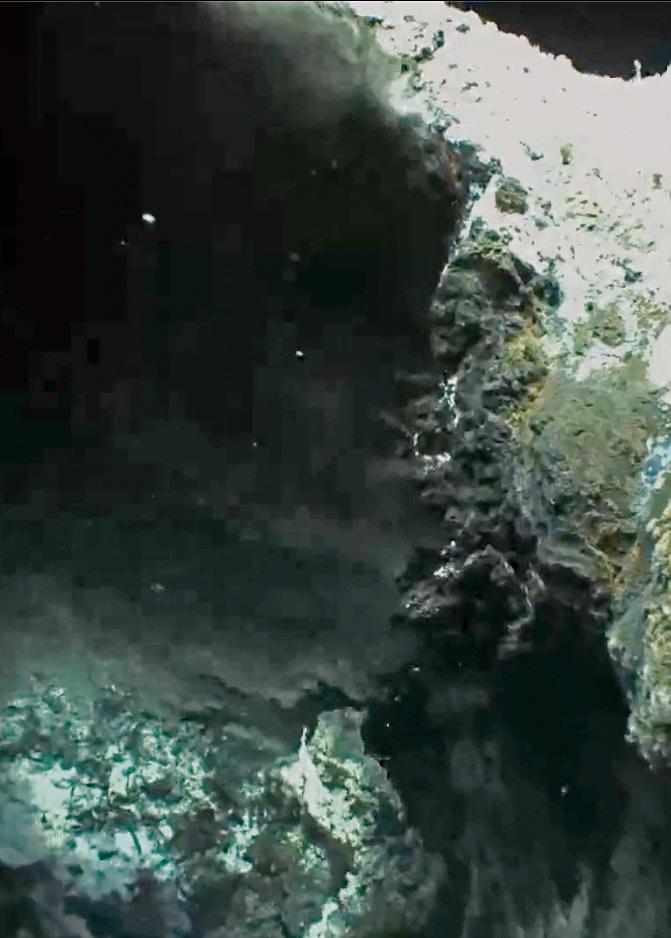
[Photo collage] Marine diatom (Coscinodiscus waleissi). Being a major part of the phytoplankton community, Coscinodiscus, like other diatoms, plays a role in carbon and silicon cycling in marine environments. When they die, their silica frustules sink to the seafloor, contributing to the marine silica cycle and sometimes forming diatomaceous deposits. Microscopic image with selective focus. St. Peter Ording, North Sea, Germany
© Solvin Zankl [M]

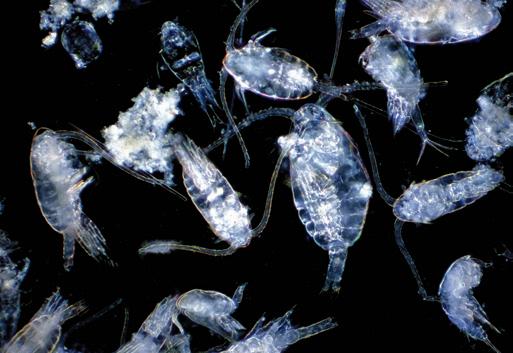
Copepod (Zooplankton)
© Choksawatdikorn/Shutterstock.com
The deep sea benthic habitats described above, which would experience the major direct impacts of any future deep sea mining, cannot be considered apart from the water column and pelagic realm above them. The coupling of the benthic and pelagic habitats of the Nordic Seas, and in particular in the areas on and above the Mid-Atlantic Ridge, is not well understood, but energy, mass and nutrients are exchanged between them through multiple processes that are crucial to various functions such as nutrient cycling and sustaining food webs.76 77
Life in the Nordic Seas is fueled by the spring bloom of phytoplankton, their growth triggered by increasing hours of sunlight.78 These tiny marine algae, which convert inorganic carbon in the ocean into biologically bound organic carbon through photosynthesis, are the basis of the food web. Phytoplankton are consumed by herbivorous zooplankton that build up their own biomass and are in turn eaten by carnivorous zooplankton, fish, seabirds and marine mammals. Production at the low trophic levels is high in spring/summer and much lower or absent in the winter months, due to the prevailing light and physical conditions. This affects other organisms in the pelagic ecosystem, the life histories of which have evolved to maximise the benefits derived from these strong seasonal dynamics.
One of the most important groups is the copepods (raudåte in Norwegian) belonging to species of the genus Calanus. These small crustaceans dominate the mesozooplankton (zooplankton measuring between 0.2–20 mm) in both numbers and biomass. As grazers of phytoplankton, they play
a key role in the transfer of energy to higher trophic levels. In the Nordic Seas, young stages, known as copepodites, are considered the most important food resource for fish larvae, while older individuals are the main prey of a wide range of planktivorous predators, including some whale and bird species, herring and mackerel.
79
As well as playing a vital role in the food web of the pelagic ecosystem, copepods enhance the descent of organic matter to the benthic communities below by producing fastsinking faecal pellets.
80 Moreover, one species, Calanus finmarchicus, has been found to undertake seasonal vertical migrations, spending the productive spring and summer period in the upper water layers before descending to great depths (~1,000 m) in winter, where it hibernates. While hibernating, the copepods continue to respire, metabolising the carbon-rich lipids they have built up over the spring and summer, and so slowly deposit this carbon in the deep ocean, where much of it remains. A 2015 study of this process estimated that including this copepod ‘lipid pump’ ‘almost doubles the previous estimates of deep-ocean carbon sequestration by biological processes in the North Atlantic’. 81
Four species of copepod are found in the Nordic Seas: Calanus
finmarchicus, C. hyperboreus, C. glacialis and C. helgolandicus. Each fulfils a different ecological role and represents a specific environment, although there are multiple areas of overlap between them. C. finmarchicus is numerically dominant and associated with both Atlantic and Arctic waters. 82 C. hyperboreus and C. glacialis are mainly associated with regions in the Iceland and Norwegian Seas that are influenced by Arctic waters and south of Svalbard, respectively, whereas C. helgolandicus is a temperate species, common in the North Sea but found as far north as the entrance to the Barents Sea. 83 Given their importance to the wider ecosystem of the Nordic Seas, there are many studies on these species and much interest in how their distributions will change in response to environmental changes. Climate change is already impacting the distribution of C. finmarchicus, which has been observed shifting north at a rate of 8.1 km/year. 84
Despite the many in-depth studies investigating the ecology of the various copepods in the region, there is still much to learn, and recent research suggests that experts may have been misidentifying them for decades. This underscores how much is still unknown about the Nordic Seas ecosystem. 85

©Solvin Zankl/Greenpeace
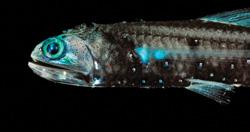
Amphipods (shrimp-like crustaceans), krill, pelagic shrimp, jellyfish (including ribbed jellyfish), arrow worms and mesopelagic fish are important groups of macroplankton (larger than ~2 cm) that do not make large horizontal migrations in the Nordic Seas.
Many species of amphipods are found in the Nordic Seas, filling a number of different ecological niches. Research into the biogeography, diversity and environmental relationships of shelf and deep sea benthic amphipods around Iceland has found distinct assemblages associated with different environmental conditions, and this is likely the same in the Nordic Seas. 86 One important amphipod, Themisto abyssorum, is found at the Loki’s Castle vent field and is considered an important predator of the vent ecosystem, feeding on microorganisms and detritus. 87
Three krill species, Thysanoessa inermis, T. longicaudata and Meganyctiphanes norvegica, predominate in the Nordic Seas and are widely distributed. All three are found from the southern coast of Norway to the Arctic waters to the northwest, though the highest
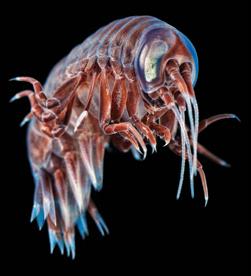
abundances of M. norvegica occur in warmer Atlantic waters.
Arrow worms live in the deep sea, with the highest densities found below 500 m. They feed on small crustaceans and are important food items for some fish species.
Mesopelagic fish are abundant around the world, with estimates of the global biomass showing huge variations ranging between 1,000 and 10,000 million tonnes.
88 The glacier lantern fish (Benthosema glaciale), silvery lightfish, also known as Mueller’s pearlside (Maurolicus muelleri ), and spotted barracudina (Arctozenus risso) are the three most important species of mesopelagic fish in the Nordic Seas, and the possibility of their future commercial exploitation is now being considered in Norway, with the Institute of Marine Research initiating a project to investigate the function and structure of the mesopelagic ecosystem and develop methods for identifying, counting and catching these fish.
89 Rising towards the surface at night and migrating down to depth during daytime, mesopelagic fish, like amphipods and krill, play a crucial role in the biological carbon pump as well as being an important element in the food web. A 2021 study notes that, in
the summer months, ‘at high latitudes, foraging mesopelagic fishes are exposed to sunlight in upper waters also at night’, which ‘makes them easy prey for visual predators’93. This limits their poleward distribution, explaining why ‘in Arctic waters north of Svalbard (> 79°N), myctophids (or lanternfish) only represent 2% or less of the biomass, while in most other areas they are a dominant taxon in the mesopelagic zone’. 90 These groups of macroplankton collectively have a huge biomass, much of which is located below 200 m. 91 Rough estimates have suggested that the standing biomass of amphipods in the Nordic Seas may be in the order of 40–200 million tons in the third quarter of the year, while for krill it may be in the order of 30–160 million tons. These estimates may be overly conservative, as they do not account for the swarming behaviour exhibited by both these groups of macroplankton. There is little available data regarding the biomass and density of pelagic prawns, and what there is doesn’t account for their vertical distribution; however, it has been suggested that the biomass of this group may constitute approximately the same biomass as the sum of amphipods,


krill and mesopelagic fish together. The biomass of arrow worms is also unknown but thought to be large. The macroplankton are clearly important to the ecology and functioning of the Nordic Seas, in both the upper and deeper parts of the water column. More information is needed on their abundance and distribution (both horizontally and vertically) to help elucidate the dynamics of the ecosystem.
Several species of squid are known to inhabit the Nordic Seas, but one, Gonatus fabricii (known sometimes in English as the boreoatlantic armhook squid), dominates. As such, it is the species about which the most information is available. The only squid to spend its entire lifecycle in the Arctic, its biomass reaches an estimated 8 million tonnes in the Nordic Seas; 46 species are known to feed on it, with most preying on the smaller juveniles in the early life stages. 92
As it grows through its lifecycle, G. fabricii has been found to descend through the water column and occupy several distinct ecological roles. Four life history stages have been identified: ‘1)
epipelagic squid (ML [mantle length] < 20 mm), preying mostly on copepods; 2) epi- and occasionally mesopelagic squid (ML 20–50 mm), preying on larger crustaceans, fish, and cephalopods [making this the top invertebrate predator in the Arctic]; 3) meso- and bathypelagic squid (ML > 50 mm), preying mainly on fish and cephalopods and 4) nonfeeding bathypelagic gelatinous females (ML > 200 mm)’ that have lost their tentacles. 93
Recent research has illuminated details of G fabricii’s lifecycle and reproductive biology. Unusually for a deep-water squid, G. fabricii has geographically restricted breeding sites, including within the deep sea mining exploration area. Elevated food availability in the epipelagic layers of the breeding areas likely increases the survival rate of young squids, and surface currents potentially help with their dispersal. It is worth noting that the putative breeding sites identified so far (excluding one in the central Arctic Ocean) are all areas where large concentrations of northern bottlenose whales – the squids’ main predator, along with sperm whales –are known to occur. 94
Dumbo octopuses, so called
because of their large, ear-like fins, are a group of deep sea octopuses belonging to the genus Grimpoteuthis These octopuses live at depths of 1,000 to 7,000 m below the surface, drifting freely through the water with their arms and web spread out widely and sometimes actively moving by flapping their fins and steering with their limbs.
95
Another octopus species, Cirroteuthis muelleri (sometimes referred to as the as the big-finned jellyhead), is found in cold seas in the boreal Arctic, the North Atlantic Ocean and the North Pacific Ocean and has been filmed in situ feeding in deep waters of the Fram Strait, west of Svalbard, and further south in the Norwegian Sea. 96 Researchers have discovered that C. muelleri migrates down to the seafloor, where it catches crustaceans and polychaete worms. By doing this, the octopuses are moving in the opposite direction to the common feeding pattern adopted by many deep sea species, where they rise to the surface to feed by night. This counter-directional migration links the benthic and pelagic food webs and may also contribute to energy transfer to species such as sharks and toothed whales that in turn feed on cirrate octopuses. 97
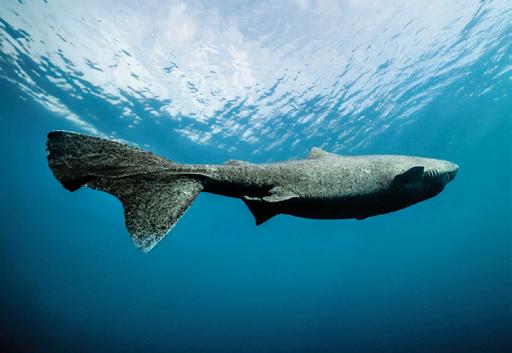

wu/naturepl.com
As described earlier, the spring plankton bloom fuels the Nordic Seas food web, including a variety of fish. The three dominant pelagic fish species in the Nordic Seas are Norwegian spring-spawning herring (Clupea harengus), mackerel (Scomber scombrus) and blue whiting (Micromesistius poutassou), all of which make large-scale seasonal movements through the area to feed on the annual zooplankton bonanza. Collectively, the three populations are sometimes referred to as the Northeast Atlantic pelagic fish complex. 98 They are important target species for commercial fisheries, and there have been numerous studies investigating various aspects of their ecology, including on the degree of competition between the three species and to what extent their biomass is controlled by the availability of prey or by predation at the next trophic level in the food web.
In recent decades, there have been some significant changes in the distribution of these important fish species. Between 1997 and 2016, there was a massive threefold increase in the summer range of the mackerel population, with the centre of distribution shifting westward by 1,650 km and northward by 400 km. A
subsequent analysis of data collected over this period suggests that the expansion was driven by increasing size of the spawning stock biomass and constrained by mesozooplankton abundance and the availability of habitat within the species’ preferred temperature range. 99 Another modelling study suggested that additional variables – notably the distribution of herring and longterm food availability as indicated by primary production – might also be influencing the mackerel distribution. 100
Mackerel are not the only pelagic fish that have changed their migratory patterns. The commercially important Norwegian spring-spawning herring has, on a decadal timescale, undergone large shifts in its annual migration patterns. An examination of data from 1996 to 2020 showed that, ‘the youngest age classes are generally found close to the Norwegian shelf, whereas the older age classes display larger variations in where they are distributed. During the period 1996–1998, the oldest age classes were found in the central and western Norwegian Sea.’101 This changed, however, during the period 1999–2004, when, ‘the whole stock migrated north after spawning, leaving the regions in the southern Norwegian Sea void of herring. Since 2005 the oldest herring has again congregated in the southwestern Norwegian Sea, in the frontal zone between the cooler East Icelandic water and the warmer Atlantic water.’102
One of the more remarkable fish to be found in the Nordic Seas is the Greenland shark (Somniosus microcephalus), a large sleeper shark that has widespread distribution in Arctic waters. It has been observed up to 2,647 m below the surface, 103 although records from Baffin Bay and Greenland suggest it is more commonly found at depths between 300 and 700 m. 104 Known to be slow swimmers, Greenland sharks used to be thought of as scavengers, but more recent research, including a study conducted in the Kongsfjorden area, Svalbard, has led to the conclusion that the Greenland shark is an active predator that uses stealth to catch its prey. The main prey species were found to be Atlantic cod, Atlantic wolffish and haddock, some of which had been swallowed whole. However, of 76 immature Greenland sharks examined in Svalbard, half had consumed seal and some had eaten minke whale. Scientists think that the only way a Greenland shark could take a seal is by cautiously approaching it while it is asleep. 105
The most remarkable fact about the Greenland shark is its longevity: radiocarbon dating of the eye lenses of 28 female Greenland sharks revealed that they had a lifespan of at least 272 years, with the oldest individual sampled having lived almost 400 years. It is suggested that the species reaches maturity at about 150 years of age. 106 These findings mean that Greenland sharks are the longest-living vertebrates. Such longevity also has implications for the species’ conservation, including its susceptibility to environmental changes. 107
4. Overview of the distribution and feeding areas of

First licensing round
Distribution and feeding areas of
Distribution and feeding areas of Northern
Distribution and feeding areas of Sperm
Twelve marine mammal species regularly occur in the area where Norway plans to start deep sea mining, including five species of baleen whale, five toothed cetaceans and two seal species. In particular, these species are the minke whale (Balaenoptera acutorostrata), humpback whale (Megaptera novaeangliae), fin whale (Balaenoptera physalus), blue whale (Balaenoptera musculus), bowhead whale (Balaena mysticetus), northern bottlenose whale (Hyperoodon ampullatus), sperm whale (Physeter macrocephalus), orca (Orcinus orca), narwhal (Monodon monoceros), white-beaked dolphin (Lagenorhyncus albirostris), harp seal (Pagophilus groenlandicus) and hooded seal (Cystophora cristata). 108
This list is not exhaustive; other marine mammals sometimes occur in the area, including the sei whale (Balaenoptera borealis), pilot whale (Globicephala melas), harbour porpoise (Phocoena phocoena), Sowerby’s beaked whale (Mesoplodon bidens) and beluga whale (Delphinapterus leucas). Three further species of seal may also occur sporadically: the ringed seal (Pusa hispida), bearded seal (Erignatus barbatus) and harbour seal (Phoca vitulina).
The Arctic and subarctic waters of the Central and Northeast Atlantic provide a rich variety of habitats that support thousands of baleen whales. In the past, all species were the target of commercial hunts that greatly reduced their populations. Today, only minke whaling is permitted in Norway.
Every year, humpback, fin and common minke whales migrate northwards from their lower-latitude breeding grounds to their feeding areas, where they spend the summer gorging on macro-zooplankton (mainly krill and copepods) and forage fish such as capelin and herring. Multiple studies show that there are considerable variations in migratory behaviour within and between species and much uncertainty regarding the routes and timing of these migrations.
A 2019 review of baleen whale ecology in Arctic and subarctic waters notes that minke whales are the most abundant, with about 122,000 individuals found north of 60 o; the fin whale population was estimated at around 23,000 (but exceeding minke whales in biomass) and the number of humpbacks, while having increased
dramatically in recent decades, at somewhere between 10,000 and 15,000. 109 High abundances of all three species have been observed around the entire Arctic front and to some extent in the more Atlantic-dominated parts of the proposed mining area, with high densities of minke and fin whales observed in the areas around the Knipovich Ridge. Humpbacks have mostly been observed at the extremes of the axis from the Denmark Strait to West Spitsbergen, and also around the Mohn Ridge. Both fin and humpback whales are known to travel from the area around Jan Mayen to the Barents Sea via Vøringutstikkeren and the northern edge of the Vøring Plateau. All three species exhibit flexibility in their prey choices, and their distribution, both spatial and temporal, is related to the availability of suitable prey. 110
Endangered blue whales also migrate to the region, but unlike the other subarctic baleen whales, they feed almost exclusively on krill. 111 The fitness, survival and reproductive success of blue whales are highly contingent on individuals’ food intake during the intense feeding season, with about 4 tons of krill ingested daily.
112 113 While still rare due to the ravages of
commercial whaling in the preceding century, the blue whale population is increasing in the Northeast Atlantic, rising from an estimated 298 animals in 1987 (coefficient of variation (CV) 0.25) to 1,012 (CV 0.23) in 2001. 114 A more recent estimate suggests that there are now around 3,000 individuals. 115 A 2024 investigation of the population structure of North Atlantic blue whales, however, strikes a note of caution, in part because there is evidence of hybridization with the more populous fin whales, which could potentially lead to ‘genetic swamping’. 116 In the summer months, blue whales tend to be concentrated around Iceland but also occur around Jan Mayen and Svalbard.
A 2021 study has highlighted the dynamic nature of the ecology of the Norwegian Sea by revealing significant shifts in the diets and distribution of fin and humpback whales in response to ecosystem changes. From 1995 to 2004, the distribution patterns for both fin and humpback whales were mainly associated with those of macro-zooplankton, but these distributions changed significantly in the period from 2009 to 2012, when fin whale distribution switched to being associated with the distribution
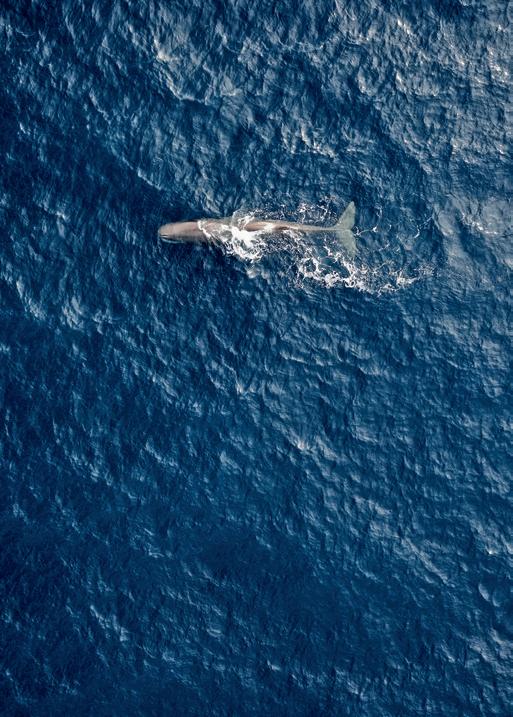
of pelagic fish – a clear response to the ‘historically large abundances of pelagic planktivorous fish in the Norwegian Sea’ recorded at that time. 117
Simultaneously, densities of humpback whales declined while those of toothed whales increased. Subsequent examination of the summer distribution of fin and humpback whales from 2013 to 2018 suggested further changes, including a northerly shift in the distributions of both species. The research identified a ‘feeding hotspot’ for fin whales located at the shelf area between Svalbard and Norway, and one for humpback whales near Bjørnøya (Bear Island). The distribution of fin whales was found to be associated with those of blue whiting and capelin, whereas that of humpback whales was associated with the distributions of capelin, herring and three species of krill (Meganyctiphanes norvegica, Thysanoessa longicaudata and Thysanoessa inermis). 118
The shifts in associations show a high degree of plasticity in the whales’ feeding habits and indicate that in recent years fish have become increasingly important to both species. Furthermore, the research demonstrated a significant negative spatial correlation between where the whales were and the ‘widely expanding’ population of Northeast Atlantic mackerel. This negative association with mackerel may be because, although mackerel have a high fat content, they are difficult for baleen whales to catch. Alternatively, it could be because other potential prey species, such as herring, capelin and copepod-feeding krill, may have been outcompeted or displaced by large schools of mackerel. Another possible explanation is that fin and humpback whales avoid the areas where the mackerel occur because of the associated presence of orcas; orcas are the dominant predators of mackerel and may outcompete the baleen whales, and they are also a potential predator of humpback calves. 119
The analysis of cetacean sightings data from Svalbard garnered by a citizen science programme from 2005–2019 also detected shifts in distribution for minke, fin, humpback and blue
whales. During the early period of the study the whales were mainly over the continental shelf break west of Spitsbergen, but later they moved into fjords and coastal areas, with the shift coinciding with ‘increased inflows of Atlantic water into the fjords along the west coast of Spitsbergen and across the north of the archipelago’. 120 Historically, the area was also home to North Atlantic right whales (Eubalaena glacialis). Along with the other species of baleen whales, sperm whales and northern bottlenose whales, North Atlantic right whales were targeted by the commercial whaling industry, and their numbers were decimated. The population has never recovered, and today the North Atlantic right whale is classified as critically endangered by the IUCN Red List of Threatened Species, with the eastern population estimated to number somewhere between 20 and 49 mature individuals. 121 In 1999, one individual – identified as ‘Porter’ from a US photo-ID catalogue – was observed grazing for a week off Kvænangen, northern Norway, having travelled at least 5,700 km in 117 days from Cape Cod. 122 Another individual, ‘Mogul’, was spotted off the Icelandic coast in 2018 and a year later off the northwest coast of France, 123 and in the summer of 2024 another sighting of this species was made off the Irish coast, 124 proving that although it is rare, they do cross over into the Northeast Atlantic. It is possible that other North Atlantic right whales in the Norwegian Sea have gone undetected. North Atlantic right whales are difficult to spot due to their dark colour, lack of a dorsal fin and the fact that they often travel alone. To date, there have been no targeted acoustic monitoring surveys that might have revealed their presence. 125 Habitat modelling suggests that the presence of high concentrations of their preferred copepod prey provide highly favourable grazing conditions for the species. 126
Of the regularly occurring cetacean species, two – the bowhead whale and narwhal – have strong affiliations with sea ice. Although there have been no observations of narwhals in
the systematic surveys of the region conducted by the Institute of Marine Research, 127 data from listening buoys has shown that narwhals are present all year round in the western part of the Fram Strait – the passage between Greenland and Svalbard – suggesting their distribution may overlap with parts of the mining area. 128 129
Like the population of North Atlantic right whales, the Spitsbergen population of bowhead whales was brought to the brink of extinction by the commercial whaling industry – a hunt that began in the early 1600s. While it is now recovering, this is a slow process due to the species’ conservative life history strategy, which involves extreme longevity (possibly up to 200 years), late sexual maturation (females begin to have calves at roughly 25 years of age) and a long inter-calf interval of 3–7 years. 130 In recent years, studies have revealed some interesting behaviour exhibited by this population of bowheads: unlike the larger bowhead populations found to the west, they reportedly ‘disperse from wintering grounds in the northernmost parts of their range during spring, returning northward again in autumn’. 131 This is the opposite of the pattern exhibited by other Arctic bowheads and northern hemisphere baleen whale populations.
Research employing acoustic monitoring methods has discovered that bowheads, like narwhals, are present in the Fram Strait throughout the year, with ‘elaborate and abundant singing’ 24 hours a day during the winter months, suggesting that this may be a mating ground for this population. 132 133 Also, while bowheads are generally associated with the ice edge, in recent years some younger bowheads have been observed much further south, in the ‘atypical’ ice-free habitat of both the Northwest and Northeast Atlantic. On these occasions the young bowheads have been feeding in habitat of the kind favoured by closely related North Atlantic right whales. It has been proposed that the behaviour of these younger whales is a consequence of the population increasing and that in the past, whales
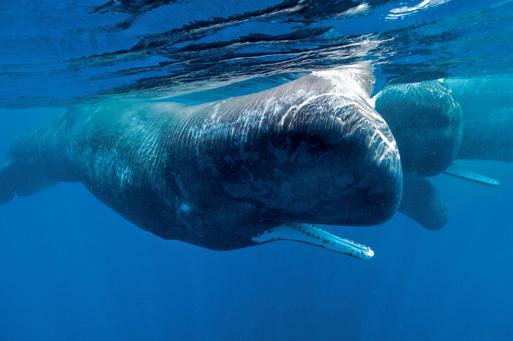
that were deepest into the polynyas (open areas of water surrounded by sea ice) were the ones that escaped the whalers and so ‘trained’ their descendants to use the same habitat. 134
Sperm whales, northern bottlenose whales, orcas and white-beaked dolphins are the key toothed whales (odontocete cetaceans) inhabiting the area proposed for future deep sea mining. All four species are top predators that find their prey in the dark marine environment by generating powerful ultrasonic clicks (biosonar) that enable them to echolocate their prey.
The sperm whales found in the area proposed for mining are all males. Females live their entire lives in warm waters, but the males leave their family groups and, between the ages of 4 and 21, join ‘bachelor schools’ composed of other males of similar age and size. Then,
as they get older, the male sperm whales head polewards to feed in nutrientrich waters, and the bachelor schools shrink. 135 These older males tend to be solitary, though sometimes they are found in loose aggregations of between 10 and 30 individuals, spread over a large area. The oldest and largest male sperm whales are thought to be found at the highest latitudes. 136 Puberty is prolonged in male sperm whales, and while they are sexually mature by the age of 20, they do not become sexually active until their late 20s, making occasional migrations to lower latitudes to mate.
Sperm whales are the biggest of the toothed whales, but despite this, they may be difficult to spot because they spend most of their lives below the surface and make long, deep dives hunting for squid and other prey. 137 Still, sperm whales are observed relatively often during minke whale surveys, particularly in the southern and eastern parts of the study area – for example, along the Vøringutstikkeren, the southern edge of the Vøring Plateau, the Mohn and Knipovich Ridges
and towards the Barents Sea.
138 The previously mentioned citizen science programme looking at cetacean populations around Svalbard also found that the area where most sperm whale sightings were reported shifted over time, from west of Bjørnøya during the years 2005–2009 to the north end of Prins Karls Forland, west of Spitsbergen, during the years 2015–2019. 139 Some observations have also been made around Jan Mayen. 140
A recent multiyear study using passive acoustic monitoring has established a baseline for the occurrence of sperm whales around Svalbard. This method involves the deployment of strategically placed hydrophones to record the sounds of the surrounding marine environment. Sperm whales lend themselves to this monitoring technique, which overcomes the inherent problems associated with visual sighting methods, by virtue of the distinctive clicks they make when hunting and navigating, as well as the repetitive clicks (codas) and slow clicks (clangs) they use to communicate amongst
themselves. The analysis of data collected between 2012 and 2021 revealed a rough pattern of sperm whale ‘hotspots’ observed in ice-free areas along the shelf break in the eastern Fram Strait and near the west coast of Spitsbergen between May and January. Another key finding of the study was that sperm whale detection rates were highest in the areas with the highest sea floor mean slope, also associated with complex underwater topography. 141
Like sperm whales, northern bottlenose whales are deep divers and are difficult to observe visually. Key aspects of their biology are still poorly understood. It is probable that northern bottlenose whales calve in the Norwegian Sea, but no specific calving areas have been identified. They are generally found in small groups (averaging 3 individuals), but exceptionally, larger groups of ~20 animals have been seen around Jan Mayen. 142 A long-term study conducted in the Northeast Atlantic showed that
northern bottlenose whales mainly prey on cephalopods, but they are also known to eat some crustaceans and fish. Deep sea cephalopods, and in particular the squid Gonatus fabricii, constitute a large portion of the northern bottlenose whale’s diet, and it is likely that the whales’ distribution reflects the distribution of this preferred prey species, adults of which have been recorded at depths of up to 2,700 m. 143
In recent years, most of the sightings of the northern bottlenose whale have occurred around Jan Mayen and along the Vøring Peninsula. Historically, however, catch records from the whaling industry, which between 1938 and 1971 significantly reduced the species’ population, suggest that Svalbard and the Knipovich Ridge were also important areas. 144 This is supported by an analysis of cetacean sightings data collected between 2002 and 2014 from around the Svalbard Archipelago that found that northern bottlenose whales were primarily seen in deep offshore waters southeast of Spitsbergen, close to the Knipovich Ridge. Only 8 of the 37 observations were in waters of less than 1,800 m depth and all of the sightings were just west of
the entrance of Isfjorden, further underscoring the affinity of this species for deep water. 145
In 2023, a study used habitat modelling to better understand the environmental factors that determine the presence of northern bottlenose whales around Jan Mayen and provide a tool to help predict where else they might be expected to occur. The study highlighted the importance of deep bathymetric features for this deep-diving species, which appears to prefer areas <1,000 m deep with a steep topography and between 1,300–2,000 m with a gentler seafloor slope. The study also pointed out that some northern bottlenose whales had been recorded further north than the northern limit of their generally accepted range. 146
Orcas are likely resident in most of the area all year round, but much of the available data comes from the summer minke whale surveys, which show a relatively high occurrence of orcas in the southwestern part of the area around Jan Mayen, along Vøringutstikkeren and in the area around Mohn Ridge.

149 Orcas are also observed infrequently around Svalbard, where they swim right up to the ice edge. 150 A 2019 review of current knowledge and threats to conservation of North Atlantic orcas notes that although multiple studies are increasing the scientific understanding of this species in the region, it remains ‘patchy’. 151 Surveys conducted over the 1987–2015 period indicate that orcas number in the low tens of thousands in the Central and Eastern North Atlantic, but because of low precision of the abundance estimates it’s not possible to identify population trends. 152
There is much scientific interest in the diet of the Northeast Atlantic orca. In 2009, it was suggested that North Atlantic orcas fell into two ecotypes based on some morphological differences in the wear of their teeth, with Type 1 cast as generalist predators feeding predominantly on fish, but with some individuals also eating marine mammals such as seals, and Type 2 cast as specialists predating solely on marine mammals. 153
Since the publication of the original paper, this separation of the two ecotypes has been called into question by the scientist who first made the suggestion, who now believes that more research in this area is needed. 154 155
Satellite tagging of a small sample of orcas, identified as either ‘fisheaters’ (6 animals) or ‘seal-eaters’ (2 animals) on the basis of observations of their foraging behaviour and biopsies, showed that they take distinctly different paths on leaving the herring wintering grounds in Norway’s northern fjords. Specifically, the sealeaters travel slowly south, hugging the coastline and visiting areas known to be favoured harbour seal haulouts, whereas the fish-eaters move offshore, travelling much faster along the continental shelf. The seal-eaters are mixed-diet opportunists, using diverse foraging strategies based on availability and preference. 156
Other research investigating the movements of Northeast Atlantic
orcas has provided other insights. The analysis of one photo-identification dataset spanning 32 years and 1,236 individual whales, created from the merging of data from separate photocapture/recapture studies, illuminated how orcas’ distribution has changed with changes in the distribution of Norwegian spring-spawning herring. The study illustrates the orcas’ adaptability and potential resilience in the face of rapid changes in the ecosystem in this region 157
Remarkably little is known about the ecology of the white-beaked dolphin, so it, like many other species, warrants more research. The species is thought to have a stable distribution, however, and white-beaked dolphins are often recorded along the continental shelf break to the west and south of Svalbard and Bjørnøya. 158 159 160
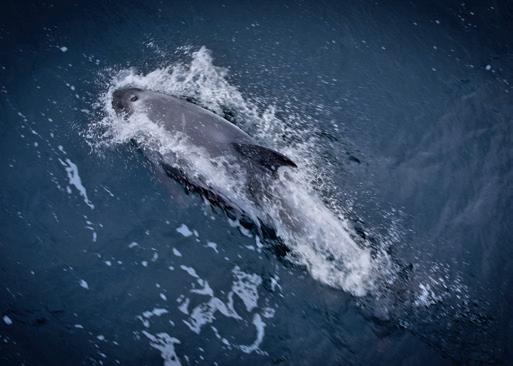
Although the Northeast Atlantic has some of the richest seabird populations in the world, there is less information on the distribution of seabirds inhabiting the Norwegian Seas ecoregion than some other sea areas, including the Barents Sea. The most complete synthesis of existing knowledge is presented in a report produced by the Norwegian Polar Institute in 2021. 161 The synthesis is largely based on information produced by the Norwegian government–funded seabird programme SEAPOP162 and data from the associated tracking programme SEATRACK163 and is supplemented with information from the scientific literature. The information presented below summarises
information from this document unless referenced otherwise.
The area is important to 26 species of seabirds, including auks, gulls, skuas, sea ducks, divers and the Arctic tern. A full list is provided in Table 1, with their global conservation status on the IUCN Red List together with their status on the Norwegian national and Svalbard Red Lists. The table also shows whether Norway holds more than 25% of the global population. The IUCN Red List status does not necessarily reflect the Norwegian national or Svalbard assessment for some species, or the level of threat faced by the regional population. For example, the population of Brünnich’s
guillemot (also known as the thickbilled murre) is listed by the IUCN as of least concern, whereas the status of the Norwegian mainland population is critical and the Svalbard population is assessed as vulnerable. Similarly, the razorbill has a status of Near Threatened on the IUCN Red List, but the Norwegian mainland population is now considered vulnerable and the Svalbard population endangered. Five of the species found in the area are listed on OSPAR’s list of threatened and/or declining species, namely the ivory gull, black-legged kittiwake, lesser black-backed gull, Brünnich’s guillemot and Steller’s eider. 164

Table 1. Status of seabird species occurring in the area opened up for deep sea mining. Adapted from the Norwegian government baseline report on seabirds.
Species Scientific
Guillemot Uria aalge
Brünnich’s guillemot (thick-billed murre) Uria iomvia
Black guillemot Cepphus grylle
Razorbill Alca torda
Little auk Alle alle
Atlantic puffin Fratercula arctica
Northern gannet Morus bassanus
Northern fulmar Fulmarus glacialis
Black-legged kittiwake Rissa tridactyla
Common gull Larus canus
Herring gull Larus argentatus
Lesser black-backed gull Larus fuscus
Great black-backed gull Larus marinus
Ivory gull Pagophila eburnea
Glaucous gull Larus hyperboreus
Iceland gull Larus glaucoides
Sabine’s gull Xema sabini
Great skua Catharacta skua
Arctic skua Stercorarius parasiticus
Arctic tern Sterna paradisaea
Long-tailed skua Stercorarius longicaudus
Long-tailed duck Clangula hyemalis
Eider Somateria mollissima
King eider Somateria spectabilis
Red-throated diver Gavia stellata
Black-throated diver Gavia arctica
* Key to categories: CR = Critically Endangered, EN = Endangered, VU = Vulnerable, NT = Near Threatened, LC = Least Concern and NA = Not Suitable (for assessment)
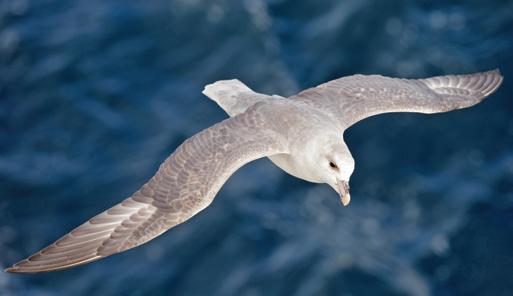
The occurrence of such large populations of seabirds in the area is due to the high primary and secondary production of phytoplankton and zooplankton, which sustains large populations of crustaceans and small pelagic fish, on which the seabirds feed. Of the small fish, capelin, sandeel and sprat are important food items for many seabirds throughout the year. Young year classes of herring are another important species, and polar cod, a species associated with the Arctic water masses, is important in the north of the region for some seabird species.
The proposed mining area is surrounded on all sides by important seabird breeding colonies. Some of the largest colonies are found on Jan Mayen and Svalbard, including Bjørnøya (Bear Island), but there are also large colonies on the east coast of Greenland and the coast of Norway, north of Lofoten. As part of an ecoregion assessment conducted by ICES in 2018,the total number of seabirds breeding in the Norwegian parts of the Norwegian Sea was estimated at 1,270,000 pairs, including 870,000 pairs of 20 species breeding along the mainland coast and 400,000 pairs of 15 species breeding on Jan Mayen, including all six species of Atlantic auk. 165
How the area is used by different seabirds throughout the seasons is dynamic and not fully understood. For those populations that breed on Jan Mayen and Svalbard, the adjacent waters are an important feeding area. The same probably holds true for the colonies on Greenland’s east coast. At the end of the breeding season, male auks (guillemots and razorbills) and their chicks undertake a swimming migration away from the shore to staging grounds where the flightless chicks fledge. Populations of several species Brünnich’s guillemot, little auk and puffin are also known to overwinter partly in the area 166
The central part of the study area is a very important migration corridor for some of the world’s largest seabird populations, linking the ecosystems of the high Arctic with those of lower latitudes. Several million seabirds from internationally important breeding areas in the Barents and Norwegian Seas migrate through the area every spring and autumn. The migratory movements are primarily southwesterly in the autumn, with birds moving from their breeding areas in the Arctic to their wintering areas in lower latitudes, and northeasterly in the spring, when they make the return journey. A study looking at six
seabird species (little auk, Atlantic puffin, guillemot, Brünnich’s guillemot, black-legged kittiwake and fulmar) that move across the area found that rather than flying straight across on their migrations they employ a ‘fly and forage’ strategy, stopping to graze and ‘re-fuel’ along the way. This highlights the importance of the area to the survival and health of these species. 167
ICES has noted that many seabird populations have decreased almost constantly since monitoring was initiated three to five decades ago, with a particularly sharp decline in recent years: ‘Over the last decade (2010–2020), most of the offshore feeding populations that are monitored have decreased with an average annual rate of 8.7% and more coastal species of 5.9%.’168 No single factor has been identified as the cause for these declines, but long-term breeding failures for pelagic-feeding species such as Atlantic puffin, black-legged kittiwake, common guillemot and Northern fulmar suggest that drastic changes in the availability of so-called ‘0-group’ fish (i.e., fish in the first year of their life) has played a large part. The availability of suitable prey may be affected by commercial fisheries and is also linked to climate change. 169
The information presented in the preceding sections of the report show that the area of the Nordic Seas opened up by the Norwegian government to deep sea mining exploration is highly productive, supporting a considerable biomass. Many kinds of marine wildlife are found in the area, some of which are resident while others travel there to feed following the spring plankton bloom. Many seabirds also cross it on their migrations to and from their breeding areas in the high Arctic.
While some species and habitats are well studied, those inhabiting the deep seas are not. The distribution and nature of the benthic habitats of the ridge system are very poorly understood, and it will take considerable time and resources to map them properly and make comprehensive species inventories. Understanding how they interact with other components of the wider ecosystem will be a further immense challenge. The recent discovery of the Jøtul hydrothermal vent field suggests that there may be others still to be identified, and with each new vent discovery scientists are finding additional new species, many endemic to particular vent fields.
The area is also undergoing rapid environmental changes that are leading to significant alterations in biodiversity and ecosystem dynamics. Often, scientists are unable to determine trends and seasonality due to lack of sufficient time series data.
The information presented in this report highlights some of the many knowledge gaps and lack of certain baseline data regarding the biodiversity and associated conditions, such as the prevailing bottom currents. These gaps mean that it is impossible to comprehensively assess the full environmental impact of any proposed deep sea mining operations – a view that has been expressed by the IMR in its response to the consultation on the impact assessment for mineral activities on the Norwegian continental shelf and the draft decision on opening the area. 170
As yet there are no specific details about how the deep sea mineral deposits would be extracted by any future mining operations, but whatever the exact technologies used, the process will need to incorporate some mechanisms for collecting the mineral ore from the seabed, bringing it to the surface, conducting any required offshore processing on surface support vessels and transporting the minerals to land.
Each of these stages will have associated detrimental environmental impacts, as may the preceding exploration phase, which during initial bathymetric surveys is likely to involve a variety of acoustic methods, including seismic testing, that introduce anthropogenic noise pollution into the marine environment. 171 I t is worth noting that new technologies and processes are being developed for deep sea mineral exploration and surveying as well as for deep sea mineral extraction, and these may involve the use of unmanned surface vessels and the fleet or swarm operation of autonomous underwater vehicles 172
For the SMS deposits, large ROVs could be used, or drilling platforms and technology adapted from that used in the offshore oil industry. For the manganese crusts, however, powerful machines able to cut into the steep underwater cliff faces will be needed. Possible options that are being considered include developing tracked vehicles that can climb the cliff faces and either slicing off sections of the crusts or using powerful water jets or vibrators to crush them. 173
Evidence is accumulating that the potential impacts from deep sea mining are likely to be ‘extensive and irreversible, permanent and immitigable’. 174 Harmful impacts include: 175
• Direct removal of seafloor habitat and organisms
• Alteration of substrate and its geochemistry
• Modification of sedimentation rates and food webs
• Creation of changes in substrate availability, heterogeneity and flow regimes
• Release of suspended sediment plumes
• Release of toxins and contamination from extraction and removal processes
• Noise pollution
• Light pollution
• Chemical leakage from mining machinery and equipment
• Unintentional transport of species (in ballast water or on equipment) to a different location

A schematic showing the potential impacts of deep-sea mining on marine ecosystems. Not to scale.
The drilling or suction of SMS deposits will have a direct physical impact on the seabed, by removing substrate and flattening the topography. Additionally, the movement of machinery will likely compress sediment. It may also alter the circulation of the vent fields. This destruction of vital habitat will consequently change or destroy the associated benthic communities and may leave the affected areas unsuitable for future recovery and recolonization. Endemic species may be made extinct. While the Norwegian government has said future mining operations will not mine active hydrothermal vents but rather will focus on the SMS deposits associated with inactive vents, the evidence presented in this report shows that these activities will still destroy unique benthic communities. It should also be noted that inactive vents are not necessarily extinct and may be associated with active hydrothermal vents as part of a large vent field. In such cases the overall field will still be hydrothermally connected to its heat source, and so all the vents within the field have the potential to resume activity. 176
The biological communities of the AMOR vent fields are only just beginning to be described, and little is known about the connectivity between them. Recent research investigating the relationships between vent sites in the Northwest Pacific found that though the sites were isolated there were pathways by which larvae of some species, aided by ocean currents, were dispersed to other vent sites. 177 This research implies that the damage to a single hydrothermal vent could impact other vent sites.
The removal of cobalt crusts from seamounts will cause widespread mortality to the benthic communities living there. Studies have shown how destructive deep sea trawling
is to benthic communities, resulting in declines in faunal biodiversity, abundance and cover, and it can be expected that deep sea mining, with its complete removal of substrate, will cause even more harm. 178 As well as the impacts of direct removal, the sponge beds located on the AMOR will be vulnerable to increased sedimentation from deep sea mining and may be susceptible to toxic effects of contaminants transported, possibly over long distances, by sediment plumes created by mining activities.
A recent investigation into the effects of crushed SMS deposits on the boreal deep sea sponge Geodia barretti and associated brittle star species (Ophiura spp.) showed that ‘deep-sea mining plumes are likely to have ecotoxicological effects on deepsea benthic fauna’. 179 The researchers subjected the organisms to SMS particles for 21 days. All the brittle stars expired within 10 days, while the sponge’s metabolism was compromised. The researchers concluded that a precautionary approach to deep sea mining is vital to prevent indirect impacts and ensure that spongemediated benthic-pelagic coupling mechanisms and other ecosystem services are not disrupted.
Sediment plumes may be generated at two stages in the mining process: a seafloor sediment plume is discharged during the extraction stage and a midwater plume is produced by the discharge of unwanted sediment and water when it is separated from the ore during ‘dewatering’. These plumes are likely to impact on species both at the seabed and in the water column, with the potential for fine sediments and dissolved metals to be dispersed over large areas.
A 2020 paper authored by 19 scientists argues that the potential impacts of sediment plumes produced by deep sea mining operations have been somewhat overlooked compared to the benthic impacts and that they pose significant risks to midwater organisms – especially
important suspension feeders such as crustaceans, polychaetes and salps – and ecosystems. 180 The authors identified a number of ways in which sediment plumes may impact midwater organisms, including:
• Diluting the food available to suspension feeders and clogging fragile mucous filter nets with fine sediment particles
• Reducing the buoyancy of gelatinous plankton through the adhesion of fine sediment
• Shifting the structure and function of microbial communities that regenerate essential nutrients for the pelagic ecosystem
• Introducing toxic metals to the pelagic environment that may persist for years and travel vast distances
• Altering the absorption of light and change backscatter properties, thus interfering with the visual communication and bioluminescent signalling that these animals rely on for prey capture and reproduction186
• Creating population effects, such as changes in both horizontal and vertical emigration and changes in community composition, which could then lead to further reductions in ecosystem services.
How the plumes behave will be dependent on the type of deposit mined, on local currents, and on the mining technology, but the volumes of these plumes will be immense. For example, it has been estimated that a hydrothermal vent operation could discharge as much as 22,000 to 38,000 m3 per day of a mix of seawater and fine sediments. 181 As yet no information is available regarding the potential impacts of sediment plumes from future mining operations on the Norwegian extended continental shelf, but a modelling exercise investigating the dispersion of SMS plumes in the Mid-Atlantic Ridge around the Azores showed likely far-reaching effects and how sediment would be carried to areas inhabited by vulnerable

cold-water corals and other areas important for fisheries. The authors also note that ‘climate-related changes in ocean circulation and deep water mass properties (e.g., warming, ocean acidification, and deoxygenation)’ will have an effect on the dispersal of plumes and the toxicity of associated metals and so need to be considered when assessing future impacts. 182
Underwater noise – at a range of frequencies and throughout the water column – will be generated by the undersea machinery, the powerful pumping systems that lift the mined ore and the surface support vessels, all of which are expected to be working around the clock in any future deep sea mining operations.
As Jeffrey Drazen, professor in the Department of Oceanography at the University of Hawaii, describes it: ‘If you’re mining sulphide deposits or crusts on sea mounts, you have to
actually grind that hard substrate off of the bottom or out of the sea floor. That’s going to be incredibly noisy … [and] because of the temperature and salinity profiles of the ocean sound is conducted for very long distances. So this is bad news.’183
It has been noted by others that ‘anthropogenic noise is known to impact a number of fish species and marine mammals by inducing behaviour changes, masking communication and causing temporary threshold shifts in hearing or permanent damage, depending on the species, type of noise and received level’. 184 Similar and other issues may arise with other types of marine life, including invertebrates. 185 186
As most deep sea species naturally experience only low levels of noise, noise arising from deep sea mining operations will be expected to increase ambient sound levels substantially. Researchers are discovering how some deep sea fish species communicate using low sound frequencies, 187 and one study on
deep sea scavenging shrimp suggests they may use sensitive acoustic systems to detect food falls up to 100 m away. 188
Of special concern are the potential impacts from noise pollution on cetaceans. It has recently been recognised that ‘the sounds produced from mining operations, including from remotely operated vehicles (ROVs) on the seafloor, overlap with the frequencies at which many cetaceans communicate, which can cause auditory masking and behaviour change’. 189 Typical behavioural responses include avoidance of the area and/or changes in behaviours such as feeding, nursing, resting or communication. 190
Baleen whales communicate using mid- and low-frequency sounds that largely overlap with the frequency range of anthropogenic noise emitted by ships, seismic operations and military sonar, which means their calls can be partially or completely ‘masked’ by them. To compete with the fog of human
sound, baleen whales may adjust the frequency or strength of their calls, which may be energetically expensive and not necessarily effective. 191 Blue whales, which regularly vocalise during the summer feeding season in the Nordic Seas, have been found by research conducted in waters of the Southern California Bight to alter their calling in response to anthropogenic noise, stopping calling in response to sonar and increasing calls in response to shipping noise. Behavioural change was recorded even at frequencies above their own vocal range. 192
Northern bottlenose whales, like other beaked whale species, are thought to have a high sensitivity to acoustic disturbance and are at risk from increasing industrialisation. Studies have shown that in response to anthropogenic noise this species may perform abrupt deep dives, cease foraging behaviour and avoid source areas for up to 24 hours.193 An experimental study investigating the response of tagged northern bottlenose whales to noise
from mid-frequency sonar, conducted in the acoustically near-pristine waters of Jan Mayen, found that the animals reacted particularly strongly. 194 Both onset and intensity of response were better predicted by received sound pressure level than by source distance. The research did not indicate that the source distances tested (0.8–28 km) modulated the behavioural effects of sonar, as some scientists have suggested it might for locations where whales are frequently exposed to sonar.
A more recent study comparing the response of four species of whale – northern bottlenose, sperm, long-finned pilot and humpback – found in Norwegian waters to underwater noise pollution showed that all four respond in the same way as they have evolved to when detecting the sounds of predatory orcas. 195 On being exposed to the noise, the whales stop foraging, which impacts their energy budgets and makes them more vulnerable, choosing, as one researcher put it, ‘life over dinner’. 196
The machinery used to cut, scrape or suction up SMS deposits and cobalt crusts will most likely be equipped with strong lights to illuminate the seafloor to enable camera control of the operations. Additional light emissions will come from ROVs used for surveying, inspection and maintenance. On the surface, the support vessels will also be sources of light, similar to those of offshore oil and gas operations.
The introduction of artificial light into the deep ocean beyond where sunlight penetrates may impact deep sea life in various ways, some of which have likely not been considered yet because this would be an entirely novel practice in a realm where the current state of knowledge is limited. While many deep sea organisms lack or have reduced eyes or light-sensing organs, others, including many deep sea fishes and invertebrates, have fully developed eyes that are sensitive to the low light levels of bioluminescence. 197 Bioluminescence

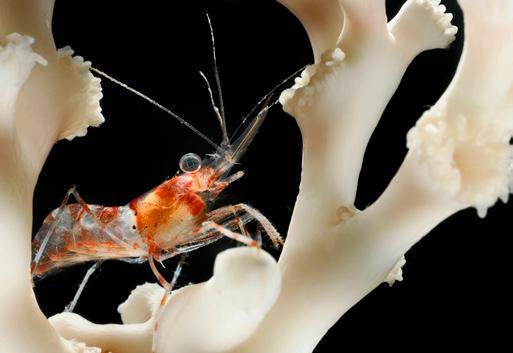
occurs across the deep ocean and is produced by lots of different organisms ranging from bacteria to fish, which may use it to communicate, hunt or defend themselves. Similar to underwater noise, artificial light might mask signals of species that use bioluminescence to communicate. Some species may be attracted to the artificial light produced by deep sea mining machinery, and others may avoid it. One possible detrimental impact is that organisms attracted to the light might be harmed or killed by the machinery; another is that the brightness of the artificial light might damage sensitive eyes or photoreceptors. This has been suggested as the cause of retinal damage observed in vent-inhabiting shrimps following scientific surveys. 198 Light from deep sea mining vessels and platforms may also have an impact. Recent studies conducted around Svalbard have shown that artificial light from both ships and instrumentation disrupts the behaviour of fish and zooplankton
down to at least 200 m depth. 199 Offshore oil and gas platforms are known to sometimes cause detrimental impacts to migrating seabirds, and given the importance of the Nordic Seas to many seabird populations, the possibility that large numbers of them might be attracted to deep sea mining sites is a matter for concern. 200 In the North Sea, migrating seabirds are attracted to platforms and some die, perhaps because the light affects their internal compasses. 201 The waters of the Grand Banks in the Northwest Atlantic are, like the Nordic Seas, an important area for migrating seabirds including planktivorous puffins and guillemots/common murres, and scientists have raised concerns about offshore hydrocarbon developments there because of the possible impacts on seabirds. 202
With all industrial activities in the maritime environment there comes
the concomitant risk of accident. For deep sea mining using new and untested technologies in extreme environments, the risks are high, with accidents potentially leading to damage to or loss of vessels and/ or mining equipment. In the worst instances, accidents could result in unsalvageable wreckage littering the seabed and/or the release of oil and other pollutants.
According to Xingsen Guo, a research fellow at University College London, the extreme environmental conditions present significant challenges to mining operations, with machines operating on steep seamount slopes facing an elevated risk of serious accident due to possible issues such as subsidence and slippage.203 Although mining activities exacerbate the risks, even without the presence of mining vehicles ‘geologic disasters may occur in seabed mining sites due to the instability of the seabed under the action of external loads [including] tectonic action, gravity,
hydrodynamic action, gas release and changes in pore pressure’.204
Cumulative and synergistic impacts of deep sea mining It has been argued that the various impacts of deep sea mining will ‘cause unavoidable, irreversible harm to deep-sea ecosystems and [put] the health of the wider ocean at risk’, with these activities ‘adding to other stressors, including various forms of pollution (litter, noise and chemical), poor fisheries management and climate change’. 205 There is also potential for synergistic effects, and impacts could become more unpredictable over time. For example, changes in ocean chemistry may disrupt key ecological processes affecting deep sea biological productivity, which in turn could result in ‘knock-on effects that we cannot currently comprehend or predict’. 206
Connectivity between deep seabed habitats and broader ecosystem functions, such as carbon fixation, cycling and storage, nutrient cycling, metal cycling and productivity, are poorly understood. Recent research is revealing new insights, such as the finding that the contribution of hydrothermal vents to surface productivity is greater than expected. This adds to the body of knowledge that implies that damage to deep sea ecosystems by deep sea mining would likely have far-reaching consequences. 207
Given the disturbance deep sea mining will cause to the seabed, the potential for significant effects on carbon cycling and storage in the deep ocean has been raised. 208
It is not only the marine life of the Nordic Seas that may be put at risk by any future deep sea mining activities. The decision to pursue deep sea mining and the likely impacts on deep sea communities clearly have the potential to undermine and restrict future and current decisions on other uses of the ocean. Representatives of
commercial fisheries have voiced strong concern: the Norwegian Fishermen’s Association (Norges Fiskerlag) has been highly critical of the Norwegian government and the huge gaps in knowledge, while the Norwegian Pelagic Association (Pelagisk Forening) is strongly opposed to the proposal, stating that ‘the area that is proposed to be opened is enormous, there is a great lack of knowledge about its effects and the impact of exploration and extraction is very uncertain’. 209
The Managing Director of Fiskebåt, Audun Maråk, has also voiced concern, stating that ‘Mining activity on the seabed is a major intervention, and it is therefore important that you take enough time before you start.’210
The deep sea mining industry is not the only one interested in hydrothermal vents – the organisms that live in the extreme conditions around vents are of great scientific interest, and the bioprospecting industry sees potential in research on the genetic makeup of so-called extremophiles, thinking this may lead to innovations that will produce novel medicines and have commercial applications in multiple sectors including food and cosmetics. Norway has had a marine bioprospecting strategy since 2009, and authorities and researchers view its future potential with high hopes.
212
211
Amidst all the unknowns, the one certainty is that any future deep sea mining activities will result in a range of direct and indirect impacts that will affect both benthic habitats and species and the water column above and its pelagic inhabitants. Some effects will be local and others will be far-ranging. Some of these effects may be temporary while others are likely to be permanent, while the repercussions may be synergistic and will have a cumulative impact over time. As there are no-large scale operations happening yet, these cannot be fully assessed.
The Norwegian government’s plans and processes have been met with widespread consternation and opposition from many different actors, both nationally and internationally.
213
The plans also rely on a highly doubtful assumption about the main intended market for the products of deep sea mining: including the EU. Meeting the EU’s projected future demand for critical raw materials used in various hightech industries, including those supporting the transition to green energy and transport, is one of the key drivers behind the Norwegian Petroleum Directorate’s deep sea mining push. The EU Commission and the Parliament, however, have expressed strong concern about the environmental impact of deep sea mining. 214 215 Furthermore, 119 European parliamentarians wrote an open letter to their Norwegian colleagues in November 2023 asking them to stop the opening process, 216 and on 31 January 2024 the European Parliament voted in favour of Resolution B9-0095/2024, expressing its concerns about the Storting’s decision to open areas of the continental shelf for mining seabed activities. 217 A previous resolution of the EU Parliament called on the Commission and member states to back an international moratorium on deep sea mining. 218
Norway’s own Environment Agency has also been highly critical, casting the government’s environmental impact assessment as inadequate, providing neither sufficient scientific information nor the legal basis to open the area to deep sea mining exploration or exploitation. 219 In addition, Norway’s Institute of Marine Research – one of Europe’s largest marine research organisations and affiliated to

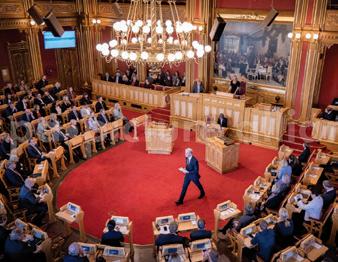
the Norwegian Ministry of Trade – released a statement detailing the extent of the knowledge gaps relating to the natural environment and bottom currents in the deep sea mining area, which it says make it ‘impossible to assess the impacts of exploring for and extracting deep-sea minerals in the affected area’. 220 The IMR’s response to the consultation on the Norwegian government’s environmental impact assessment elaborates on the statement, emphasising the government’s lack of a plan for filling in the knowledge gaps and pointing out how going ahead with the plan will impair Norway’s reputation as a responsible ocean state. 221
With the decision to open up its claim to an extended continental shelf to deep sea mining activities, Norway is rowing against the tide: more than 800 scientists have called for a pause on deep sea mining globally, and a growing number of countries are either calling for an outright ban, a moratorium or a precautionary pause unless and until a set of conditions around preventing environmental damage, understanding deep sea ecosystems and securing social licence can be met. 222 223 An editorial in the prestigious journal Nature said the decision has undermined ongoing efforts to protect the ocean and broken Norway’s promise to the other nations on the Ocean Panel and to scientists by going against the advice of the Ocean Panel’s scientific advisers and other researchers. 224 Anne Larigauderie, executive secretary of the Intergovernmental SciencePolicy Platform on Biodiversity and Ecosystem Services (IPBES), has also been critical of the move, telling NRK that deep sea mining is harmful to biodiversity and should be avoided. 225
On 23 April 2024, WWF Norway announced that it was taking the Norwegian government to court, arguing that the decision to open up the area was made based on a strategic impact assessment that does not meet the minimum requirements under Norwegian law. 226
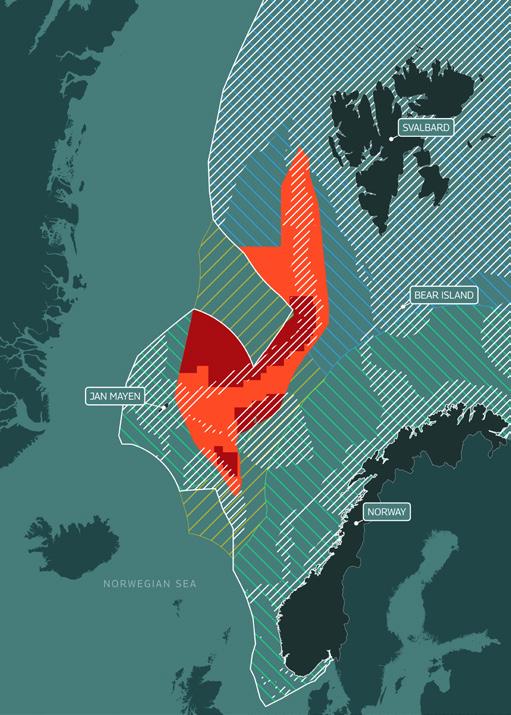
Figure 6. Particularly valuable and vulnerable areas (VMEs) cover large parts of the Nordic waters and the Banana Hole.

The extraordinary biodiversity and productivity described in this report clearly warrant protection, especially in the context of the inherent vulnerability of many of the species and habitats that would be affected and the rapid and major environmental changes that are currently underway in the region. Norway’s deep sea mining plans, if allowed to proceed, risk widespread, significant and enduring harm to the area’s marine life and interlinked ecosystems. For these reasons, the Norwegian government must immediately halt the national process and join the growing number of nations supporting a global moratorium on deep sea mining.
Currently, of all the regions covered by OSPAR, Region I (Arctic Waters), which includes the entire area being opened up to mining, has the lowest marine protected area (MPA) coverage, at only 2%. 227 By comparison, the other four OSPAR regions have an average MPA coverage of just under 16%, 228 which is still only half of the minimum that the science demonstrates is required to safeguard marine ecosystems. 229 Significantly, there are no MPAs for deep sea hydrothermal vents or seamounts – the primary geological focus of Norway’s deep sea mining proposal. This lack of
protection underscores the urgent need for a step-change in the Norwegian government’s marine protection efforts so that effective conservation measures can be put in place, underpinned by the establishment of a network of fully and highly protected areas that have been demonstrated to protect marine life on the seabed and throughout the water column, preserve ecosystem functioning and build resilience to environmental change. 230 231
The Norwegian government has an obligation to halt and reverse biodiversity loss through its international obligations as a party to the Convention on Biological Diversity, and importantly has committed to conserve at least 30% of Norway’s marine area by 2030, in line with the targets established under the CBD’s recently ratified COP15 Kunming-Montreal Global Biodiversity Framework. 232
The Norwegian Environment Agency has already made some first steps in this direction by commissioning the IMR to conduct a knowledge status review and to make recommendations for ‘how to achieve the best possible protection of benthic ecosystems, including ecologically important species and habitats, in deeper parts of the
Nordic Seas’. 233 Applying the principles and criteria set out by the CBD for the design of marine protected area networks, the IMR arrived at three different MPA network scenarios with a protection target of 30% of the study area. Scenarios representing 40% and 50% protection were also developed, ‘based on empirical evidence that this is the minimum size needed to fully protect the range of different aspects of biodiversity components, as well as threatened species’. Of these different network designs, the authors selected as most favourable one that covers 407,968 km², representing 33% of the total study area. The network design is composed of 22 MPA units ranging in size from 85 to 77,242 km². Importantly, it protects ‘100% of all known active and inactive hydrothermal vents and cold seeps, as well as 100% of the areas defined as coral and sponge hotspots’ that constitute VMEs.
Implementing this network design would constitute a significant step toward mitigating further biodiversity loss. As is clear from this report, the ecology of benthic communities is intrinsically coupled with the water column and pelagic realm above, and the impacts of any future deep sea mining activities would not be confined to the benthos. For these reasons, achieving holistic protection of the Nordic Seas will require that other measures are developed to protect the overlying pelagic ecosystem.
Meeting this goal would require Norway to work collaboratively with its neighbours, because the northernmost part of the proposed area overlaps with Svalbard’s Fisheries Protection Zone and two parts of the seabed proposed for deep sea mining lie beneath international waters. 234 This part of the high seas, commonly known as the ‘Banana Hole’, is bordered not only by Norway, but also by Iceland, Greenland and Denmark/the Faroe Islands.
The current governance of human activities taking place in the water column of the Banana Hole falls to a patchwork of organisations with different sectoral competencies and geographies. These include global instruments with different sectoral competencies, such as the International Maritime Organisation (IMO) and the International Whaling Commission (IWC), as well as relevant regional fisheries management organisations, the North-East Atlantic Fisheries Commission (NEAFC) and the regional seas organisation, OSPAR. Collectively, these ‘legal instruments and frameworks and relevant global, regional, subregional and sectoral bodies’ are known as IFBs. 235
Working in this complex context has been made
somewhat easier with the adoption of the Global Ocean Treaty – shorthand for the UN Biodiversity Beyond National Jurisdiction (BBNJ) Agreement. The Global Ocean Treaty is a legally binding instrument that provides both a mandate to safeguard the biodiversity that inhabits areas beyond national jurisdiction and a mechanism and pathway to coordinate action via the various IFBs.
On adoption of the Treaty in June 2023, the head of the Norwegian delegation, Christine Finbak, expressed Norway’s support for the Treaty, including the use of area-based management tools (ABMTs) such as MPAs as a means to help deliver the goal of conserving at least 30% of land and sea areas by 2030. 236 In the same statement, she also noted the need for ratification to ensure swift entry into force and implementation of the Treaty. Norway signed the Treaty on 20 September 2023 but has not yet ratified it.
The Global Ocean Treaty enables the use of ABMTs and the establishment of high seas MPAs, includes measures relating to marine genetic resources (MGRs) and introduces the requirement to conduct environmental impact assessments in a transparent manner, as well as having provisions for capacity building. 237 All of these elements of the Treaty package are relevant to Norway’s proposed deep sea mining exploration and extraction activities.
As the waters of the Banana Hole are international waters and any seabed mining activities carried out by Norway are bound to impact the water column, Norway will, once the Treaty comes into force, at a bare minimum have a duty to provide relevant information regarding its EIA to other parties through the Clearing-House Mechanism, with an opportunity for the Scientific and Technical Body to provide comments. The current rush by the Norwegian government to expedite its deep sea mining plans runs contrary to the objectives of the Treaty and its previously stated support.
The possibility of putting protection measures in place and creating an effective network of ocean sanctuaries in the Nordic Seas exists, but it will require the Norwegian government to change its current direction of travel and arrest its deep sea mining plans. Only by disregarding the false solutions presented by advocates of the deep sea mining industry, studying and understanding the ecological functions of the Nordic Seas ecosystem and conferring effective protection can the area’s marine life and longterm sustainability be ensured.

This report provides an overview of the biological richness of the Arctic areas being opened up to deep sea mining by the Norwegian government.
While some species have been extensively researched, others, including many found in various benthic communities, are not well understood. Scientists continue to discover and describe new species as they research the deep, and there may be other vent fields with their own unique communities that have yet to be detected.
The general lack of environmental and biological baseline data combined with the limited understanding of the full environmental impacts of deep sea mining, the multiple failings of their environmental impact assessment and the rushed process all argue that the Norwegian government must freeze all ongoing deep sea mining–related activities and not award any licences for exploration or exploitation. The Norwegian government should instead invest in undertaking research
to fill in the host of knowledge gaps regarding the biodiversity of the area to enable its conservation.
The area in question is undergoing rapid environmental change, and governmental focus needs to be shifted from exploitation to protection in order to safeguard marine life and build ecosystem resilience.
To to meet its international commitments and ensure that the ambitions of the Kunming-Montreal Global Biodiversity Framework and the Global Ocean Treaty are fully delivered, the Norwegian government must halt destructive activities in the seabed and waters under its jurisdiction, establish an effective and fully representative network of ocean sanctuaries covering at least 30% of its jurisdiction and work with others to ensure that equivalent protection is conferred for the overlying international waters.
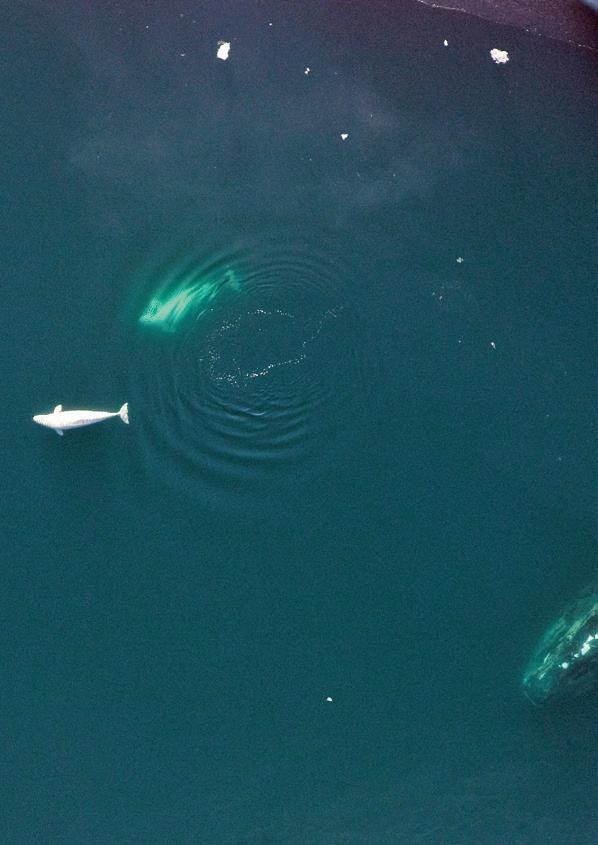

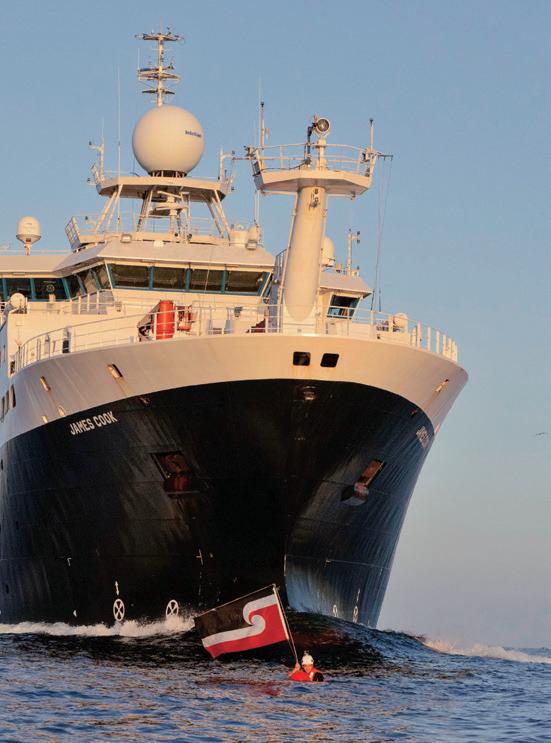
1 Ocean Census (2024, 6 June). Unveiling life in the Arctic abyss: Ocean Census expedition reveals biodiversity wonders at life’s extremes. https:// oceandecade.org/news/unveiling-life-in-the-arctic-abyss-ocean-census-expedition-reveals-biodiversity-wonders-at-lifes-extremes/
2 Sweetman A.K., Smith A.J., de Jonge D.S.W., Hahn T., Schroedl P., Silverstein M., Andrade C., Edwards L.R., Lough A.J.M., Woulds C., Homoky W.B., Koschinsky A., Fuchs S., Kuhn T., Geiger F. and Marlow J. (2024). Evidence of dark oxygen production at the abyssal seafloor. Nat. Geosci. 17, 737–739. https://doi. org/10.1038/s41561-024-01480-8
3 Hommedal, S. (2023, 30 January). IMR believes impact assessment fails to take into account knowledge gaps. Institute of Marine Research. https://www.hi.no/en/hi/news/2023/january/ imr-believes-impact-assessment-fails-to-take-intoaccount-knowledge-gaps
4 Deep-Sea Mining Science Statement (n.d.). https:// seabedminingsciencestatement.org
5 Fauna & Flora (2023). Update to ‘An assessment of the risks and impacts of seabed mining on marine ecosystems’. Cambridge, UK. https://www.fauna-flora.org/wp-content/uploads/2023/05/fauna-flora-deep-sea-mining-update-report-march-23.pdf p28
6 CBD (2022, 19 December). COP 15 decision 15/4. Kunming-Montreal Global Biodiversity Framework. https://www.cbd.int/doc/decisions/cop-15/cop-15dec-04-en.pdf
7 Shorthand for the UN Biodiversity Beyond National Jurisdiction (BBNJ) Agreement. See United Nations (n.d.) About the agreement. https://www.un.org/ bbnjagreement/en/bbnj-agreement/about-agreement
8 Richardson K., Lucht W., Bendtsen J., Cornell S.E., Donges J.F., Drüke M., Fetzer I., Bala G., von Bloh W., Feulner G., Fiedler S., Gerten D., Gleeson T., Hofmann M., Huiskamp W., Kummu M., Mohan C., Nogués-Bravo D., Petri S. … Rockström J. (2023). Earth beyond six of nine planetary boundaries. Science Advances 9(37). https://doi.org/10.1126/ sciadv.adh2458
9 Green Minerals (2024, 14 May). Capital Markets Day. https://kommunikasjon.ntb.no/ ir-files/17848272/3103/4459/CMD%20presentation.pdf p37
10 Food and Agriculture Organization of the United Nations (n.d.). Vulnerable marine ecosystems. https://www.fao.org/in-action/vulnerable-marine-ecosystems/en/
11 Ocean Census (2024, 6 June). Unveiling life in the Arctic abyss: Ocean Census expedition reveals biodiversity wonders at life’s extremes. https:// oceandecade.org/news/unveiling-life-in-the-arctic-abyss-ocean-census-expedition-reveals-biodiversity-wonders-at-lifes-extremes/
12 European Parliament (2024, 31 January). Motion for a resolution on Norway’s recent decision to advance seabed mining in the Arctic. B9-0095/2024. https://www.europarl.europa.eu/doceo/document/B-9-2024-0095_EN.html
13 Norwegian Offshore Directorate (2024, 9 January). Parts of the Norwegian shelf can be opened for mineral activity. https://www.sodir.no/en/ whats-new/news/general-news/2024/norwegian-shelf-opened-for-mineral-activity/
14 Stortinget (2024, 9 January). Voteringsoversikt for sak: Mineralverksemd på norsk kontinentalsokkel – opning av areal og strategi for forvaltning av ressursane. https://www.stortinget.no/no/Saker-og-publikasjoner/Saker/Sak/Voteringsoversikt/?p=94807&dnid=1
15 Det Kongelege Olje- og Energidepartement
(Ministry of Petroleum and Energy) (2023). Mineralverksemd på norsk kontinentalsokkel – opning av areal og strategi for forvaltning av ressursane. Meld. St. 25 (2022–2023). https:// www.regjeringen.no/contentassets/e0d0706a51274b598e4ef832545e59d3/nn-no/pdfs/ stm202220230025000dddpdfs.pdf (Translated from Norwegian to English using DeepL online translation tool.)
16 WWF (2023, 7 December). Norwegian parliament advances deep seabed mining: A catastrophe for the ocean. https://wwf.panda.org/ wwf_news/?10307966/Norwegian-parliament-advances-deep-seabed-mining-A-catastrophe-for-the-ocean
17 United Nations Division for Ocean Affairs and Law of the Sea (DOALOS) (n.d.). Commission on the Limits of the Continental Shelf (CLCS). Outer limits of the continental shelf beyond 200 nautical miles from the baselines: Submissions to the Commission: Submission by the Kingdom of Norway. Page last updated 28 June 2024. https://www.un.org/depts/ los/clcs_new/submissions_files/submission_nor. htm
18 “The European Union considers that the Svalbard archipelago, including Bear Island, generates its own maritime zones separate from those generated by other Norwegian territory, and that there is a continental shelf and an EEZ, which pertain to Svalbard. Norway considers these areas to be under Norwegian jurisdiction equal to those generated by other Norwegian territory. The CLCS recommendation referred to above also disclaimed that “[t]he Recommendations of the Commission only deal with issues related to article 76 [UNCLOS] and Annex II to [UNCLOS] and are without prejudice to matters relating to delimitation between States, or application of other parts of the Convention or any other treaties.” (p.2, § 8)”, see https://www. un.org/depts/los/clcs_new/submissions_files/ nor06/nor_rec_summ.pdf
19 Government.no (2024, 26 June). Public consultation of the first licensing round for seabed minerals. https://www.regjeringen.no/en/aktuelt/public-consultation-of-the-first-licensing-round-for-seabed-minerals/id3047008/
20 Johansen S.E., Panzner M., Mittet R., Amundsen H.E.F., Lim A., Vik E., Landrø M. and Arntsen B. (2019). Deep electrical imaging of the ultraslow-spreading Mohns Ridge. Nature 567, 379–383. https://doi.org/10.1038/s41586-0191010-0
21 NOAA Ocean Exploration (n.d.). What is a mid-ocean ridge? https://oceanexplorer.noaa.gov/facts/midocean-ridge.html
22 Amundesen B. (2023m 16 January). New Norwegian land could emerge from the Atlantic Ocean. Sciencenorway.no. https://www.sciencenorway.no/ geology-seabed-volcanoes/new-norwegian-landcould-emerge-from-the-atlantic-ocean/2139271
23 Norwegian Offshore Directorate (2023, 27 January). Seabed minerals: Substantial resources on the Norwegian shelf. https://www.sodir.no/en/whatsnew/news/general-news/2023/seabed-minerals-substantial-resources-on-the-norwegian-shelf/
24 Pedersen R., Thorseth I., Nygård T., Lilley M. and Kelley D. (2010). Hydrothermal activity at the Arctic Mid-Ocean Ridges. In Diversity of Hydrothermal Systems on Slow Spreading Ocean Ridges (eds P.A. Rona, C.W. Devey, J. Dyment and B.J. Murton). https://doi.org/10.1029/2008GM000783
25 Hein J., Mizell K., Koschinsky A. and Conrad T. (2013). Deep-ocean mineral deposits as a source of critical metals for high- and green-technology applications: Comparison with land-based resources.
Ore Geol. Rev. 51, 1–14. http://dx.doi.org/10.1016/j. oregeorev.2012.12.001
26 Manhart A. and McLennan A. (2023). The rush for metals in the deep sea: Considerations on deep-sea mining. Study by Oeko-Institut e.V. for Greenpeace e.V., Freiburg, February 2023. https://www.greenpeace.de/publikationen/Greenpeace_Studie_Tiefseebergbau_0.pdf
27 ICES is an intergovernmental marine science organisation that has collated much of the information we have about distribution of the region’s species and habitats and helped develop current understanding of the region’s broad ecological functioning. See ICES (n.d.) Who we are. https://www.ices.dk/ about-ICES/who-we-are/Pages/Who-we-are.aspx
28 ICES (n.d). Norwegian Sea ecoregion description. https://www.ices.dk/advice/ESD/Pages/Norwegian-Sea-ecoregion-description.aspx
29 OSPAR Commission (n.d.). The North-East Atlantic. https://www.ospar.org/convention/the-north-eastatlantic
30 Loeng H. and Drinkwater K. (2007). An overview of the ecosystems of the Barents and Norwegian Seas and their response to climate variability. Deep Sea Research Part II: Topical Studies in Oceanography 54(23–26), 2478–2500. https://doi.org/10.1016/j. dsr2.2007.08.013
31 Raj R.P., Chatterjee S., Bertino L., Turiel A. and Portabella M. (2019). The Arctic Front and its variability in the Norwegian Sea. Ocean Science 15(6), 1729–1744. https://doi.org/10.5194/os-15-17292019
32 Arneberg P., Siwertsson A., Husson B., Børsheim K.Y., Fauchald P., Hjøllo S.S., Høines A., Jones E., Melle W., Nøttestad L., Planque B., Skagseth Ø., Slotte A., Kolvang H. and Stenevik E.K. (2023). Panel-based Assessment of Ecosystem Condition of the Norwegian Sea pelagic ecosystem. Report 2023-16, project 15165-01. https://www.hi.no/ en/hi/nettrapporter/rapport-fra-havforskningen-en-2023-16
33 Ottersen G., Børsheim K.Y., Arneborg L., Maar M., Schourup-Kristensen V., Rosell E.A. and Hieronymus M. (2023). Observed and expected future impacts of climate change on marine environment and ecosystems in the Nordic region. Report 2023-10, project 15884. https://www.hi.no/en/hi/nettrapporter/rapport-fra-havforskningen-en-2023-10
34 Fransner F., Fröb F., Tjiputra J., Goris N., Lauvset S.K., Skjelvan I., Jeansso E., Omar A., Chierici M., Jones E., Fransson A., Ólafsdóttir S.R., Johannessen T. and Olsen A. (2022). Acidification of the Nordic Seas. Biogeosciences 19, 979–1012. https://doi. org/10.5194/bg-19-979-2022
35 OSPAR (2023). Ocean acidification. QSR 2023. https://oap.ospar.org/en/ospar-assessments/quality-status-reports/qsr-2023/other-assessments/ ocean-acidification/
36 ICES (2021, 30 November). Norwegian Sea ecoregion – Fisheries overview. https://doi.org/10.17895/ ices.advice.9150
37 Marine Stewardship Council (2023, June). Northeast Atlantic pelagic fisheries – Management challenges for straddling fish stocks. https://www. msc.org/docs/default-source/default-document-library/nea_pelagics_2023-06-21.pdf
38 Paulus E. (2021). Shedding light on deep-sea biodiversity—A highly vulnerable habitat in the face of anthropogenic change. Front. Mar. Sci., Sec. Global Change and the Future Ocean 8. https://doi. org/10.3389/fmars.2021.667048
39 ICES (2023, 19 April). Vulnerable marine ecosystems in EU waters. https://www.ices.dk/news-andevents/news-archive/news/Pages/VMEadvice.aspx
40 Buhl-Mortensen L., Burgos J., Steingrund P.,
Buhl-Mortensen P., Ólafsdóttir S. and Ragnarsson S. (2019). Vulnerable marine ecosystems (VMEs): Coral and sponge VMEs in Arctic and sub-Arctic waters – Distribution and threats. Nordic Council of Ministers. http://dx.doi.org/10.6027/TN2019-519
41 Gollner S., Colaço A., Gebruk A., Halpin P.N., Higgs N., Menini E., Mestre N.C., Qian P.Y., Sarrazin J., Szafranski K. and Van Dover C.L. (2021). Application of scientific criteria for identifying hydrothermal ecosystems in need of protection. Marine Policy 132, 104641. https://doi.org/10.1016/j.marpol.2021.104641
42 UN General Assembly (2007, 6 March). Resolution 61/105 adopted by the General Assembly on 8 December 2006. https://documents.un.org/doc/undoc/gen/n06/500/73/pdf/n0650073.pdf pp16–17
43 Dunn D.C., Van Dover C.L., Etter R.J., Smith C.R., Levin L.A., Morato T., Colaço A., Dale A.C., Gebruk A.V., Gjerde K.M., Halpin P.N., Howell K.L., Johnson D., Perez J.A.A., Ribeiro M.C., Stuckas H. and Weaver, P. (2018). A strategy for the conservation of biodiversity on mid-ocean ridges from deep-sea mining. Science Advances 4(7). https://doi.org/10.1016/j. ocecoaman.2019.04.014
44 Brix S., Kaiser S., Lörz A-N., Le Saout M., Schumacher M., Bonk F., Egilsdottír H., Ólafsdóttir S.H., Tandberg A.H.S., Taylor J., Tewes S., Xavier J.R. and Linse K. (2022). Habitat variability and faunal zonation at the Ægir Ridge, a canyon-like structure in the deep Norwegian Sea. PeerJ 10, e1339. https://doi. org/10.7717/peerj.13394
45 Menini E., Calado H., Danovaro R., Manea E. and Halpin P.N. (2023). Towards a global strategy for the conservation of deep-sea active hydrothermal vents. npj Ocean Sustainability 2, 22. https://doi. org/10.1038/s44183-023-00029-3
46 Miller K.A., Thompson K.F., Johnston P. and Santillo D. (2018). An overview of seabed mining including the current state of development, environmental impacts, and knowledge gaps. Front. Mar. Sci., Sec. Deep-Sea Environments and Ecology 4. https://doi. org/10.3389/fmars.2017.00418
47 Ramirez-Llodra E., Hilario A., Paulsen E., Costa C.V., Bakken T., Johnsen G. and Rapp H.T. (2020). Benthic communities on the Mohn’s Treasure mound: Implications for management of seabed mining in the Arctic mid-ocean ridge. Front. Mar. Sci., Sec. Global Change and the Future Ocean 7. https://doi. org/10.3389/fmars.2020.00490
48 Bohrmann G., Streuff K., Römer M., Knutsen S.-M., Smrzka D., Kleint J., Röhler A., Pape T., Sandstå N.R., Kleint C., Hansen C., dos Santos Ferreira C., Walter M., de Paula Santos G.M. and Bach W. (2024). Discovery of the first hydrothermal field along the 500-km-long Knipovich Ridge offshore Svalbard (the Jøtul field). Sci. Rep. 14, 10168. https://doi. org/10.1038/s41598-024-60802-3
49 Green Minerals (2024, 14 May). Capital Markets Day. https://kommunikasjon.ntb.no/ ir-files/17848272/3103/4459/CMD%20presentation.pdf p37
50 Boonnawa C., Viflot T., Pereira S., Barreyre T., Jamieson J.W., Stokke R. Steen I.H., Scheffler J., Meckel E.-M., Rosner M., Fiebig J. and Reeves E.P. (2022). Diverse styles of hydrothermal chemistry on the ultraslow Arctic Mohns Ridge: The Fåvne, Ægir and Loki’s Castle vent fields. AGU Fall Meeting abstracts, OS55B-02. https://ui.adsabs.harvard. edu/abs/2022AGUFMOS55B..02B/abstract
51 Pedersen R., Rapp H., Thorseth I., Lilley M., Barriga F., Baumberger T., Flesland K., Fonseca R., FrühGreen G. and Jørgensen S. (2010). Discovery of a black smoker vent field and vent fauna at the Arctic mid-ocean ridge. Nature Communications 1, 126. http://dx.doi.org/10.1038/ncomms1124
52 Hamstad I.M. (2021). Characterization of benthic communities at Loki’s Castle vent field using a photomosaic. [Unpublished MSc thesis]. University of Bergen. https://bora.uib.no/bora-xmlui/handle/11250/2779706
53 Eilertsen M.H., Kongsrud J.A., Tandberg A.H.S., Alvestad T., Budaeva N., Martell L., Ramalho S.P., Falkenhaug T., Huys R., Oug E., Bakken T., Høisæter T., Rauch C., Carvalho F.C., Savchenko A.S., Ulvatn
T., Kognshavn K., Berntsen C.M., Olsen B.R. and Pedersen R.B. (2024). Diversity, habitat endemicity and trophic ecology of the fauna of Loki’s Castle vent field on the Arctic Mid-Ocean Ridge. Sci. Rep. 14, 103. https://doi.org/10.1038/s41598-02346434-z
54 Georgieva M.N., Wiklund H., Bell J.B., Eilertsen M.H., Mills R.A., Little C.T.S. and Glove A.G. (2015). A chemosynthetic weed: The tubeworm Sclerolinum contortum is a bipolar, cosmopolitan species. BMC Evol. Biol. 15, 280. https://doi.org/10.1186/ s12862-015-0559-y
55 Eilertsen M.H. (2020, 15 September). Sampling has begun! https://cbearctic.com/2020/09/15/sampling-has-begun/
56 Boonnawa C., Viflot T., Pereira S., Barreyre T., Jamieson J.W., Stokke R. Steen I.H., Scheffler J., Meckel E.-M., Rosner M., Fiebig J. and Reeves E.P. (2022). Diverse styles of hydrothermal chemistry on the ultraslow Arctic Mohns Ridge: The Fåvne, Ægir and Loki’s Castle vent fields. AGU Fall Meeting abstracts, OS55B-02. https://ui.adsabs.harvard. edu/abs/2022AGUFMOS55B..02B/abstract
57 Syvderud M.R. (2023). Trophic ecology of peripheral fauna at the Fåvne hydrothermal vent field on the Arctic mid-ocean ridge. [Unpublished master’s thesis]. University of Bergen. https://bora.uib.no/ bora-xmlui/bitstream/handle/11250/3070652/ Master_Thesis_Marte_R-d-y_Syvderud.pdf
58 Pedersen R.B., Olsen B.R., Barreyre T., Bjerga A., Denny A., Eilertsen M.H., Fer I., Haflidason H., Hestetun J.T., Jørgensen S., Ribeiro P.A., Steen I.H., Stubseid H., Tandberg A.H.S. and Thorseth I. (2023). Fagutredning Mineralressurser i Norskehavet Landskapstrekk, Naturtyper Og Bentiske Økosystemer. Senter for Dyphavsforskning, Universitetet i Bergen. https://www.regjeringen. no/contentassets/dbf5144d0fbc42b5a4db5fc7eb4fa312/vedlegg-3.-senter-for-dyphavsforskning-uib.-landskapstrekk-naturtyper-og-bentiske-okosystemer.pdf (Translated from Norwegian to English using DeepL online translation tool.)
59 Schander C., Rapp H.T., Kongsrud J.A., Bakken T., Berge J., Cochrane S., Oug E., Byrkjedal I., Todt C., Cedhagen T., Fosshagen A., Gebruk A.V., Larsen K., Levin L., Obst M., Pleijel F., Stöhr S., Warén A., Mikkelsen N.T. … Pedersen R.B. (2010). The fauna of hydrothermal vents on the Mohn Ridge (North Atlantic). Marine Biology Research 6(2), 155–171. https://doi.org/10.1080/17451000903147450
60 Incorvaia D. (2023, 20 October). How sea anemones living on deep-sea hydrothermal vents avoid metal poisoning. Science News. https://www.sciencenews. org/article/sea-anemones-vents-metal-poisoning
61 MARUM (2022, 19 August). New hydrothermal field discovered by MARUM expedition. https://www. marum.de/en/New-hydrothermal-field-discovered-by-MARUM-expedition.html
62 Ocean Census (2024, 6 June). Unveiling life in the Arctic abyss: Ocean Census expedition reveals biodiversity wonders at life’s extremes. https:// oceandecade.org/news/unveiling-life-in-the-arctic-abyss-ocean-census-expedition-reveals-biodiversity-wonders-at-lifes-extremes/
63 Ocean Census (2024, 22 May). Arctic Deep Discoveries #BiodiversityDay. https://youtu.be/YHKcOZFMJIA?si=mg3_EK81wl7q-7Cl
64 Van Dover C.L. (2019). Inactive sulfide ecosystems in the deep sea: A review. Front. Mar. Sci., Sec. Deep-Sea Environments and Ecology 6. https://doi. org/10.3389/fmars.2019.00461
65 DOSI (2023, 27 January). Letter submitted to the Royal Norwegian Ministry of Petroleum and Energy. https://www.dosi-project.org/wp-content/ uploads/DOSI_2023_Submission_MineralActivitiesNorway.pdf
66 Jamieson J.W. and Gartman A. (2020). Defining active, inactive, and extinct seafloor massive sulfide deposits. Marine Policy 117, 103926. https://doi. org/10.1016/j.marpol.2020.103926
67 Ramirez-Llodra E., Hilario A., Paulsen E., Costa C.V., Bakken T., Johnsen G. and Rapp H.T. (2020). Benthic communities on the Mohn’s Treasure mound:
Implications for management of seabed mining in the Arctic Mid-Ocean Ridge. Front. Mar. Sci., Sec. Global Change and the Future Ocean 7. https://doi. org/10.3389/fmars.2020.00490
68 IUCN (2017, April). Seamount conservation. Issues brief. https://www.iucn.org/resources/issues-brief/ seamount-conservation
69 Kutti T., Windsland K., Broms C., Falkenhaug T., Biuw M., Thangstad T. and Bergstad O. (2019). Seamounts in the OSPAR Maritime Area. Report 201942, project 14855. https://www.hi.no/hi/nettrapporter/rapport-fra-havforskningen-en-2019-42
70 Eriksen E., van der Meeren G.I., Nilsen B.M., von Quillfeldt C.H. and Johnsen H. (2021). Særlig verdifulle og sårbare områder (SVO) i norske havområder –Miljøverdi. Report 2021-26, project 15166. https:// www.hi.no/hi/nettrapporter/rapport-fra-havforskningen-2021-26
71 Meyer H.K., Roberts E.M., Rapp H.T. and Davies A.J. (2019). Spatial patterns of arctic sponge ground fauna and demersal fish are detectable in autonomous underwater vehicle (AUV) imagery. Deep Sea Research Part I: Oceanographic Research Papers 153, 103137. https://doi.org/10.1016/j. dsr.2019.103137
72 Meyer H.K., Davies A.J., Roberts E.M., Xavier J.R., Ribeiro P.A., Glenner H., Birkely S.-R. and Rapp H.T. (2023). Beyond the tip of the seamount: Distinct megabenthic communities found beyond the charismatic summit sponge ground on an arctic seamount (Schulz Bank, Arctic Mid-Ocean Ridge). Deep Sea Research Part I: Oceanographic Research Papers 191, 103920. https://doi.org/10.1016/j. dsr.2022.103920
73 Roberts E.M., Mienis F., Rapp H.T., Hanz U., Meyer H.K. and Davies A.J. (2018). Oceanographic setting and short-timescale environmental variability at an Arctic seamount sponge ground. Deep Sea Research Part I: Oceanographic Research Papers 138, 98–113. https://doi.org/10.1016/j.dsr.2018.06.007
74 Busch K., Hanz U., Mienis F., Mueller B., Franke A., Roberts E.M., Rapp H.T. and Hentschel U. (2020). On giant shoulders: How a seamount affects the microbial community composition of seawater and sponges. Biogeosciences 17, 3471–3486. https:// doi.org/10.5194/bg-17-3471-2020
75 Mienis F. (2021, 25 March). Arctic sponge survival in the extreme deep sea. Royal Netherlands Institute for Sea Research. https://www.nioz.nl/en/news/ arctic-sponge-survival-in-the-extreme-deep-sea
76 Kutti T., Mork K.A., Chierici M., Børsheim K.Y., Bagøien E., Knutsen T., Broms C., Klevjer T.A., Strand E., Gjøsæter H., Stenevik E.K., Høines A.S., Windsland K. and Frie A.K. (2021). Pelagiske økosystem i De nordiske hav - grunnlagsstudie knyttet til åpningsprosess for utforskning og utvinning av havbunnsmineraler på norsk kontinentalsokke. https://www.regjeringen.no/contentassets/ a3dd0ce426a14e25abd8b55154f34f20/ pelagiske-okosystem-i-de-nordiske-hav_hi.pdf (Translated from Norwegian to English using DeepL online translation tool.)
77 Griffiths J.R., Kadin M., Nascimento F.J.A., Tamelander T., Törnroos A., Bonaglia S., Bonsdorff E., Brüchert V., Gårdmark A., Järnström M., Kotta J., Lindegren M., Nordström M.C., Norkko A., Olsson J., Weigel B., Žydelis R., Blenckner T., Niiranen S. and Winder M. (2017). The importance of benthic-pelagic coupling for marine ecosystem functioning in a changing world. Global Change Biology 23(6), 2179–2196. https://doi.org/10.1111/gcb.13642
78 Mignot A., Ferrari R. and Mork K.A. (2016). Spring bloom onset in the Nordic Seas. Biogeosciences 13, 3485–3502. https://doi.org/10.5194/bg-13-34852016
79 Aarflot J.M., Hjøllo S.S., Strand E. and Skogen M.D. (2022). Transportation and predation control structures the distribution of a key calanoid in the Nordic Seas. Progress in Oceanography 202, 102761. https://doi.org/10.1016/j.pocean.2022.102761
80 Belgrano A. (Ed.) (2016). Biodiversity and ecosystem services in Nordic coastal ecosystems: An IPBES-like assessment. Volume 1: The general overview. Nordic Council of Ministers. https://nor-
den.diva-portal.org/smash/get/diva2:1219782/ FULLTEXT01.pdf
81 Jónasdóttir S.H., Visser A.W., Richardson K. and Heath M.R. (2015). Seasonal copepod lipid pump promotes carbon sequestration in the deep North Atlantic. PNAS 112(39), 12122–12126. https://doi. org/10.1073/pnas.1512110112
82 Broms C., Melle W. and Kaartvedt S. (2009). Oceanic distribution and life cycle of Calanus species in the Norwegian Sea and adjacent waters. Deep Sea Research Part II: Topical Studies in Oceanography 56(21–22), 1910–1921. https://doi.org/10.1016/j. dsr2.2008.11.005
83 Strand E., Bagøien E., Edwards M, Broms C. and Klevje T. (2020). Spatial distributions and seasonality of four Calanus species in the Northeast Atlantic. Progress in Oceanography 185, 102344. https:// doi.org/10.1016/j.pocean.2020.102344
84 Chust G., Castellani C., Licandro P., Ibaibarriaga L., Sagarminaga Y. and Irigoien X. (2014). Are Calanus spp. shifting poleward in the North Atlantic? A habitat modelling approach. ICES Journal of Marine Science 71(2), 241–253. https://doi.org/10.1093/ icesjms/fst147
85 Hestvik L. (2024, 29 April). Calanus may have been misidentified for decades. Nord University. https:// www.nord.no/en/news/calanus-may-have-beenmisidentified-for-decades
86 Lörz A-N., Kaiser S., Oldeland J., Stolter, C., Kürzel K. and Brix K. (2021). Biogeography, diversity and environmental relationships of shelf and deepsea benthic Amphipoda around Iceland. PeerJ 9, e11898. https://doi.org/10.7717%2Fpeerj.11898
87 Olsen B.R., Troedsson C., Hadziavdic K., Pedersen R.B. and Rapp H.T. (2014). A molecular gut content study of Themisto abyssorum (Amphipoda) from Arctic hydrothermal vent and cold seep systems. Molecular Ecology 23, 3877–3889. https://doi. org/10.1111/mec.12511
88 Standal D. and Grimaldo E. (2020). Institutional nuts and bolts for a mesopelagic fishery in Norway. Marine Policy 119, 104043. https://doi.org/10.1016/j. marpol.2020.104043
89 Institute of Marine Research (2021, 28 May). The Norwegian Sea. https://www.hi.no/en/hi/forskning/ research-programmes/the-norwegian-sea-ecosystems
90 Langbehn T.J., Aksnes D.L., Kaartvedt S., Fiksen Ø., Ljungström G. and Jørgensen C. (2022). Poleward distribution of mesopelagic fishes is constrained by seasonality in light. Global Ecology and Biogeography 31(3), 546–561. https://doi.org/10.1111/ geb.13446
91 Kutti T., Mork K.A., Chierici M., Børsheim K.Y., Bagøien E., Knutsen T., Broms C., Klevjer T.A., Strand E., Gjøsæter H., Stenevik E.K., Høines A.S., Windsland K. and Frie A.K. (2021). Pelagiske økosystem i De nordiske hav - grunnlagsstudie knyttet til åpningsprosess for utforskning og utvinning av havbunnsmineraler på norsk kontinentalsokke. https://www.regjeringen.no/contentassets/ a3dd0ce426a14e25abd8b55154f34f20/ pelagiske-okosystem-i-de-nordiske-hav_hi.pdf (Translated from Norwegian to English using DeepL online translation tool.)
92 Golikov A.V., Sabirov R.M., Blicher M.E., Ceia F.R., Xavier J.C., Zakharov D.V., Zimina O.L. and Jørgensen L.L. (2020). Ecological role of the Arctic’s most abundant cephalopod, Gonatus fabricii. Fram Forum Research Notes. https://framsenteret.no/ecological-role-of-the-arctics-most-abundant-cephalopod-gonatus-fabricii/
93 Golikov A.V., Ceia F.R., Hoving H.J.T., Queirós J.P., Sabirov R.M., Blicher M.E., Larionova A.M., Walkusz W., Zakharov D.V. and Xavier J.C.(2022). Life history of the Arctic squid Gonatus fabricii (Cephalopoda: Oegopsida) reconstructed by analysis of individual ontogenetic stable isotopic trajectories. Animals 12(24), 3548. https://doi.org/10.3390/ ani12243548
94 Golikov A.V., Blicher M.E., Jørgensen L.L., Walkusz W., Zakharov D.V., Zimina O.L. and Sabirov R.M. (2019). Reproductive biology and ecology of the boreoatlantic armhook squid Gonatus fabricii (Cephalopo -
da: Gonatidae). Journal of Molluscan Studies 85(3), 287–299. https://doi.org/10.1093/mollus/eyz023
95 Chetan-Welsh H. (n.d.). Dumbo octopus: The murky world of the deepest octopus species. Natural History Museum. https://www.nhm.ac.uk/discover/ what-is-a-dumbo-octopus.html
96 Golikov A.V., Stauffer J.B., Schindler S.V., Taylor J., Boehringer L., Purser A., Sabirov R.M. and Hoving H.J.(2023). Miles down for lunch: Deep-sea in situ observations of Arctic finned octopods Cirroteuthis muelleri suggest pelagic-benthic feeding migration. Proc Biol Sci. 290, 20230640. https:// doi.org/10.1098%2Frspb.2023.0640
97 GEOMAR Helmholtz Centre for Ocean Research Kiel (2023, 13 July). Deep-sea imagery and observations reveal novel octopus feeding behavior. Phys. org. https://phys.org/news/2023-07-deep-sea-imagery-reveal-octopus-behavior.html
98 Planque B., Favreau A., Husson B., Mousing E.A., Hansen C., Broms C., Lindstrøm U. and Sivel E. (2022). Quantification of trophic interactions in the Norwegian Sea pelagic food-web over multiple decades. ICES Journal of Marine Science 79(6), 1815–1830. https://doi.org/10.1093/icesjms/ fsac111
99 Olafsdottir A.H., Utne K.R., Jacobsen J.A., Jansen T., Óskarsson G.J., Nøttestad L., Elvarsson B., Broms C. and Slotte A. (2019). Geographical expansion of Northeast Atlantic mackerel (Scomber scombrus) in the Nordic Seas from 2007 to 2016 was primarily driven by stock size and constrained by low temperatures. Deep Sea Research Part II: Topical Studies in Oceanography 159, 152–168. https://doi. org/10.1016/j.dsr2.2018.05.023
100 Nikolioudakis N., Skaug H.J., Olafsdottir A.H., Jansen T., Jacobsen J.A. and Enberg K. (2019). Drivers of the summer-distribution of Northeast Atlantic mackerel (Scomber scombrus) in the Nordic Seas from 2011 to 2017; A Bayesian hierarchical modelling approach. ICES Journal of Marine Science 76(2), 530–548. https://doi.org/10.1093/icesjms/fsy085
101 Eliasen S.K., Homrum E., Jacobsen J., Kristiansen I., Óskarsson G., Salthaug A. and Stenevik E. (2021). Spatial distribution of different age groups of herring in Norwegian Sea, May 1996–2020. Front. Mar. Sci., Sec. Marine Ecosystem Ecology 8. https:// doi.org/10.3389/fmars.2021.778725
102 Eliasen S.K., Homrum E., Jacobsen J., Kristiansen I., Óskarsson G., Salthaug A. and Stenevik E. (2021). Spatial distribution of different age groups of herring in Norwegian Sea, May 1996–2020. Front. Mar. Sci., Sec. Marine Ecosystem Ecology 8. https:// doi.org/10.3389/fmars.2021.778725
103 Kulka D.W., Cotton C.F., Anderson B., Derrick D., Herman K. and Dulvy N.K. (2020). Somniosus microcephalus. The IUCN Red List of Threatened Species 2020: e.T60213A124452872. https:// dx.doi.org/10.2305/IUCN.UK.2020-3.RLTS. T60213A124452872.en
104 Nielsen J., Hedeholm R., Simon M. and Steffensen J. (2013). Distribution and feeding ecology of the Greenland shark (Somniosus microcephalus) in Greenland waters. Polar Biology. http://dx.doi. org/10.1007/s00300-013-1408-3
105 Lydersen C., Fisk A.T. and Kovacs K.M. (2016). A review of Greenland shark (Somniosus microcephalus) studies in the Kongsfjorden area, Svalbard Norway. Polar Biology 39, 2169–2178. https://doi. org/10.1007/s00300-016-1949-3
106 Nielsen J., Hedeholm R.B., Heinemeier J., Bushnell P.G., Christiansen J.S., Olsen J., Ramsey C.B., Brill R.W., Simon M., Steffensen K.F. and Steffensen J.F. (2016). Eye lens radiocarbon reveals centuries of longevity in the Greenland shark (Somniosus microcephalus). Science 353(6300), 702–704. http:// dx.doi.org/10.1126/science.aaf1703
107 Edwards J.E., Hiltz E., Broell F., Bushnell P.G., Campana S.E., Christiansen J.S., Devine B.M., Gallant J.J., Hedges K.J., MacNeil M.A., McMeans B.C., Nielsen J., Præbel K., Skomal G.B., Steffensen J.F., Walter R.P., Watanabe Y.Y., VanderZwaag D.L. and Hussey N.E. (2019). Advancing research for the management of long-lived species: A case study on the Greenland shark. Front. Mar. Sci., Sec. Marine Megafauna 6.
https://doi.org/10.3389/fmars.2019.00087
108 Kutti T., Mork K.A., Chierici M., Børsheim K.Y., Bagøien E., Knutsen T., Broms C., Klevjer T.A., Strand E., Gjøsæter H., Stenevik E.K., Høines A.S., Windsland K. and Frie A.K. (2021). Pelagiske økosystem i De nordiske hav - grunnlagsstudie knyttet til åpningsprosess for utforskning og utvinning av havbunnsmineraler på norsk kontinentalsokke. https://www.regjeringen.no/contentassets/ a3dd0ce426a14e25abd8b55154f34f20/ pelagiske-okosystem-i-de-nordiske-hav_hi.pdf (Translated from Norwegian to English using DeepL online translation tool.)
109 Moore S.E., Haug T., Víkingsson G.A. and Stenson G.B. (2019). Baleen whale ecology in arctic and subarctic seas in an era of rapid habitat alteration. Progress in Oceanography 176, 102118. https:// doi.org/10.1016/j.pocean.2019.05.010
110 Kutti T., Mork K.A., Chierici M., Børsheim K.Y., Bagøien E., Knutsen T., Broms C., Klevjer T.A., Strand E., Gjøsæter H., Stenevik E.K., Høines A.S., Windsland K. and Frie A.K. (2021). Pelagiske økosystem i De nordiske hav - grunnlagsstudie knyttet til åpningsprosess for utforskning og utvinning av havbunnsmineraler på norsk kontinentalsokke. https://www.regjeringen.no/contentassets/ a3dd0ce426a14e25abd8b55154f34f20/ pelagiske-okosystem-i-de-nordiske-hav_hi.pdf (Translated from Norwegian to English using DeepL online translation tool.)
111 OSPAR (2010). Background document for blue whale Balaenoptera musculus. https://qsr2010. ospar.org/media/assessments/Species/P00495_ blue_whale.pdf
112 Guilpin M., Lesage V., McQuinn I., Brosset P., Doniol-Valcroze T., Jeanniard-du-Dot T. and Winkler G. (2020). Repeated vessel interactions and climateor fishery-driven changes in prey density limit energy acquisition by foraging blue whales. Front. Mar. Sci., Sec. Marine Megafauna 7. https://doi.org/10.3389/fmars.2020.00626
113 OSPAR (2010). Background document for blue whale Balaenoptera musculus https://qsr2010. ospar.org/media/assessments/Species/P00495_ blue_whale.pdf
114 Cooke J.G. (2018). Balaenoptera musculus (errata version published in 2019). The IUCN Red List of Threatened Species 2018: e.T2477A156923585. https://dx.doi.org/10.2305/IUCN.UK.2018-2.RLTS. T2477A156923585.en
115 Pike D.G., Gunnlaugsson T., Mikkelsen B., Halldórsson S.D. and Víkingsson G.A. (2019). Estimates of the abundance of cetaceans in the Central North Atlantic based on the NASS Icelandic and Faroese shipboard surveys conducted in 2015. NAMMCO Scientific Publications 11. https://doi. org/10.7557/3.4941
116 Jossey S., Haddrath O., Loureiro L., Weir J.T., Lim B.K., Miller J., Scherer S.W., Goksøyr A., Lille-Langøy R., Kovacs K.M., Lydersen C., Routti H. and Engstrom M.D. (2024). Population structure and history of North Atlantic blue whales (Balaenoptera musculus musculus) inferred from whole genome sequence analysis. Conserv. Genet. 25, 357–371. https://doi. org/10.1007/s10592-023-01584-5
117 Løviknes S., Jensen K.H., Krafft B.A., Anthonypillai V. and Nøttestad L. (2021). Feeding hotspots and distribution of fin and humpback whales in the Norwegian Sea from 2013 to 2018. Front. Mar. Sci., Sec. Marine Ecosystem Ecology 8. https://doi. org/10.3389/fmars.2021.632720
118 Løviknes S., Jensen K.H., Krafft B.A., Anthonypillai V. and Nøttestad L. (2021). Feeding hotspots and distribution of fin and humpback whales in the Norwegian Sea from 2013 to 2018. Front. Mar. Sci., Sec. Marine Ecosystem Ecology 8. https://doi. org/10.3389/fmars.2021.632720
119 Løviknes S., Jensen K.H., Krafft B.A., Anthonypillai V. and Nøttestad L. (2021). Feeding hotspots and distribution of fin and humpback whales in the Norwegian Sea from 2013 to 2018. Front. Mar. Sci., Sec. Marine Ecosystem Ecology 8. https://doi. org/10.3389/fmars.2021.632720
120 Bengtsson O., Lydersen C. and Kovacs K. M. (2022).
Cetacean spatial trends from 2005 to 2019 in Svalbard, Norway. Polar Research 41. https://doi. org/10.33265/polar.v41.7773
121 Weir, C.R. (2023). Eubalaena glacialis (Europe assessment). The IUCN Red List of Threatened Species 2023: e.T41712A221073107. https://www. iucnredlist.org/species/41712/221073107#assessment-information
122 Jakobsen K.-O., Marx M. and Øien N. (2003). Two-way Trans-Atlantic migration of a North Atlantic right whale (Eubalaena glacialis). Marine Mammal Science 20(1), 161–166. http://dx.doi. org/10.1111/j.1748-7692.2004.tb01147.x
123 Pettis H. (2019, 5 July). North Atlantic right whale off the coast of France. New England Aquarium. https://www.neaq.org/north-atlantic-right-whaleoff-the-coast-of-france/
124 Whooley P. (2024, 20 August). First Irish record of a North Atlantic right whale validated by IWDG. Irish Whale and Dolphin Group. https://iwdg.ie/1st-irishrecord-of-a-north-atlantic-right-whale-validatedby-iwdg/
125 Kutti T., Mork K.A., Chierici M., Børsheim K.Y., Bagøien E., Knutsen T., Broms C., Klevjer T.A., Strand E., Gjøsæter H., Stenevik E.K., Høines A.S., Windsland K. and Frie A.K. (2021). Pelagiske økosystem i De nordiske hav - grunnlagsstudie knyttet til åpningsprosess for utforskning og utvinning av havbunnsmineraler på norsk kontinentalsokke. https://www.regjeringen.no/contentassets/ a3dd0ce426a14e25abd8b55154f34f20/ pelagiske-okosystem-i-de-nordiske-hav_hi.pdf (Translated from Norwegian to English using DeepL online translation tool.)
126 Monsarrat S., Pennino M.G., Smith T.D., Reeves R.R., Meynard C.N., Kaplan D.M. and Rodrigues A.S.L. (2016). A spatially explicit estimate of the pre-whaling abundance of the endangered North Atlantic right whale. Conserv. Biol. 30(4), 783–791. https://doi.org/10.1111/cobi.12664
127 Kutti T., Mork K.A., Chierici M., Børsheim K.Y., Bagøien E., Knutsen T., Broms C., Klevjer T.A., Strand E., Gjøsæter H., Stenevik E.K., Høines A.S., Windsland K. and Frie A.K. (2021). Pelagiske økosystem i De nordiske hav - grunnlagsstudie knyttet til åpningsprosess for utforskning og utvinning av havbunnsmineraler på norsk kontinentalsokke. https://www.regjeringen.no/contentassets/ a3dd0ce426a14e25abd8b55154f34f20/ pelagiske-okosystem-i-de-nordiske-hav_hi.pdf (Translated from Norwegian to English using DeepL online translation tool.)
128 Vacquié-Garcia J., Lydersen C., Marques T.A., Aars J., Ahonen H., Skern-Mauritzen M., Ølen N. and Kovacs K.M. (2017). Late summer distribution and abundance of ice-associated whales in the Norwegian High Arctic. Endang. Species Res. 32, 59–70. https:// doi.org/10.3354/esr00791
129 Ahonen H., Stafford K.M., Lydersen C., de Steur L. and Kovacs K.M. (2019). A multi-year study of narwhal occurrence in the western Fram Strait— Detected via passive acoustic monitoring. Polar Research 38. https://doi.org/10.33265/polar. v38.3468
130 International Whaling Commission (n.d). Bowhead whale: Balaena mysticetus. https://iwc.int/aboutwhales/whale-species/bowhead-whale
131 Kovacs K.M., Lydersen C., Vacquiè-Garcia J., Shpak O., Glazov D. and Heide-Jørgensen M.P. (2020). The endangered Spitsbergen bowhead whales’ secrets revealed after hundreds of years in hiding. Biol. Lett.16(6), 20200148. http://doi.org/10.1098/ rsbl.2020.0148
132 Stafford K.M., Moore S.E., Berchok C.L., Wiig Ø., Lydersen C., Hansen E., Kalmbach D. and Kovacs K.M. (2012). Spitsbergen’s endangered bowhead whales sing through the polar night. Endang. Species Res. 18, 95–103. https://doi.org/10.3354/esr00444
133 Ahonen H., Stafford K.M., de Steur L., Lydersen C., Wiig Ø. and Kovacs K.M. (2017). The underwater soundscape in western Fram Strait: Breeding ground of Spitsbergen’s endangered bowhead whales. Marine Pollution Bulletin 123(1–2), 97–112. https://doi.org/10.1016/j.marpolbul.2017.09.019
134 Kutti T., Mork K.A., Chierici M., Børsheim K.Y., Bagøien E., Knutsen T., Broms C., Klevjer T.A., Strand E., Gjøsæter H., Stenevik E.K., Høines A.S., Windsland K. and Frie A.K. (2021). Pelagiske økosystem i De nordiske hav - grunnlagsstudie knyttet til åpningsprosess for utforskning og utvinning av havbunnsmineraler på norsk kontinentalsokke. https://www.regjeringen.no/contentassets/ a3dd0ce426a14e25abd8b55154f34f20/ pelagiske-okosystem-i-de-nordiske-hav_hi.pdf (Translated from Norwegian to English using DeepL online translation tool.)
135 NOAA (n.d.). Sperm whale. https://www.fisheries. noaa.gov/species/sperm-whale
136 Pöyhönen V., Thomisch K., Kovacs K.M., Lydersen C. and Ahonen H. (2024). High Arctic ‘hotspots’ for sperm whales (Physeter macrocephalus) off western and northern Svalbard, Norway, revealed by multi-year passive acoustic monitoring (PAM). Sci. Rep. 14, 5825. https://doi.org/10.1038/s41598024-56287-9
137 Diogou N., Palacios D.M., Nieukirk S.L., Nystuen J.A., Papathanassiou E., Katsanevakis S. and Klinck H. (2019). Sperm whale (Physeter macrocephalus) acoustic ecology at Ocean Station PAPA in the Gulf of Alaska – Part 1: Detectability and seasonality. Deep Sea Research Part I: Oceanographic Research Papers 150, 103047. https://doi.org/10.1016/j. dsr.2019.05.007
138 Kutti T., Mork K.A., Chierici M., Børsheim K.Y., Bagøien E., Knutsen T., Broms C., Klevjer T.A., Strand E., Gjøsæter H., Stenevik E.K., Høines A.S., Windsland K. and Frie A.K. (2021). Pelagiske økosystem i De nordiske hav - grunnlagsstudie knyttet til åpningsprosess for utforskning og utvinning av havbunnsmineraler på norsk kontinentalsokke. https://www.regjeringen.no/contentassets/ a3dd0ce426a14e25abd8b55154f34f20/ pelagiske-okosystem-i-de-nordiske-hav_hi.pdf (Translated from Norwegian to English using DeepL online translation tool.)
139 Bengtsson O., Lydersen C. and Kovacs K.M. (2022). Cetacean spatial trends from 2005 to 2019 in Svalbard, Norway. Polar Research 41. https://doi. org/10.33265/polar.v41.7773
140 Leonard D.M. and Øien N.I. (2020). Estimated abundances of cetacean species in the Northeast Atlantic from two multiyear surveys conducted by Norwegian vessels between 2002–2013. NAMMCO Scientific Publications 11. http://dx.doi. org/10.7557/3.4695
141 Pöyhönen V., Thomisch K., Kovacs K.M., Lydersen C. and Ahonen H. (2024). High Arctic ‘hotspots’ for sperm whales (Physeter macrocephalus) off western and northern Svalbard, Norway, revealed by multi-year passive acoustic monitoring (PAM). Sci. Rep. 14, 5825. https://doi.org/10.1038/s41598024-56287-9
142 Jakobsdóttir H. (2021). Group size and composition of northern bottlenose whales (Hyperoodon ampullatus) between Iceland and Jan Mayen. Líf- og umhverfisvísindadeild, Háskóli Íslands. https:// skemman.is/bitstream/1946/38491/3/holmfridur-jakobsdottir-bs_final_hj.pdf
143 Bjørke H. (2001). Predators of the squid Gonatus fabricii (Lichtenstein) in the Norwegian Sea. Fisheries Research 52(1), 113–120. https://doi. org/10.1016/S0165-7836(01)00235-1
144 Øien N. and Hartvedt S. (2011). Northern bottlenose whales Hyperoodon ampullatus in Norwegian and adjacent waters. Paper presented to the IWC Scientific Committee, May 2011, SC/63/SM1. Cambridge: IWC. https://www.researchgate.net/ profile/Nils-Oien/publication/268292963_Northern_bottlenose_whales_Hyperoodon_ampullatus_in_Norwegian_and_adjacent_waters/ links/5578015608aeb6d8c01ced88/Northern-bottlenose-whales-Hyperoodon-ampullatus-in-Norwegian-and-adjacent-waters.pdf
145 Storrie L., Lydersen C., Andersen M., Wynn R.B. and Kovacs K.M. (2018). Determining the species assemblage and habitat use of cetaceans in the Svalbard Archipelago, based on observations from 2002 to 2014. Polar Research 37. http://dx.doi.org/
10.1080/17518369.2018.1463065
146 Woo K.Y., Isojunno S. and Miller P.J.O. (2023). Habitat use of the northern bottlenose whale (Hyperoodon ampullatus) near Jan Mayen, North Atlantic. Mar. Ecol. Prog. Ser. 718, 119–136. https://doi. org/10.3354/meps14374
147 Jourdain E., Ugarte F., Víkingsson G., Samarra F., Ferguson S., Lawson J., Vongraven D. and Desportes G. (2019). North Atlantic killer whale Orcinus orca populations: A review of current knowledge and threats to conservation. Mammal Review 49(83). http://dx.doi.org/10.1111/mam.12168
148 Leonard D.M. and Øien N.I. (2020). Estimated abundances of cetacean species in the Northeast Atlantic from two multiyear surveys conducted by Norwegian vessels between 2002–2013. NAMMCO Scientific Publications 11. http://dx.doi. org/10.7557/3.4695
149 Leonard D.M. and Øien N.I. (2020). Estimated abundances of cetacean species in the Northeast Atlantic from Norwegian shipboard surveys conducted in 2014–2018. NAMMCO Scientific Publications 11. http://dx.doi.org/10.7557/3.4694
150 Storrie L., Lydersen C., Andersen M., Wynn R.B. and Kovacs K.M. (2018). Determining the species assemblage and habitat use of cetaceans in the Svalbard Archipelago, based on observations from 2002 to 2014. Polar Research 37. http://dx.doi.org/ 10.1080/17518369.2018.1463065
151 Jourdain E., Ugarte F., Víkingsson G., Samarra F., Ferguson S., Lawson J., Vongraven D. and Desportes G. (2019). North Atlantic killer whale Orcinus orca populations: A review of current knowledge and threats to conservation. Mammal Review 49(83). http://dx.doi.org/10.1111/mam.12168
152 Pike D.G., Gunnlaugsson T., Mikkelsen B., Víkingsson G. and Desportes G. (2020). Distribution and abundance of killer whales in the Central North Atlantic, 1987–2015. NAMMCO Scientific Publications 11. https://doi.org/10.7557/3.5579
153 Foote A.D., Newton J., Piertney, S.B., Willerslev E. and Gilbert M.T.P. (2009). Ecological, morphological and genetic divergence of sympatric North Atlantic killer whale populations. Molecular Ecology 18(24), 5207–5217. https://doi.org/10.1111/j.1365294X.2009.04407.x
154 Foote A.D. (2022). Are ‘Type 2’ killer whales long in the tooth? A critical reflection on the discrete categorization of Northeast Atlantic killer whales. Marine Mammal Science 39(1), 345–350. https:// doi.org/10.1111/mms.12964
155 Remili A. (2022, 19 August). You can stop calling North Atlantic killer whales type 1 and type 2. Whale Scientists. https://whalescientists.com/ north-atlantic-killer-whales/
156 Vogel E.F., Rikardsen A.H., Blanchet M.-A., Blévin P. and Biuw M. (2024). Norwegian killer whale movements reflect their different prey types. Polar Research 43. https://doi.org/10.33265/polar. v43.9840
157 Jourdain E., Goh T., Kuningas S., Similä T., Vongraven D., Karoliussen R., Bisther A. and Hammond P.S. (2021). Killer whale (Orcinus orca) population dynamics in response to a period of rapid ecosystem change in the eastern North Atlantic. Ecology and Evolution 11(23), 17289–17306. https://doi. org/10.1002/ece3.8364
158 Norsk Polarinstitutt (n.d). White-beaked dolphin (Lagenorhynchus albirostris). https://www.npolar. no/en/species/white-beaked-dolphin/#2
159 Leonard D.M. and Øien N.I. (2020). Estimated abundances of cetacean species in the Northeast Atlantic from two multiyear surveys conducted by Norwegian vessels between 2002–2013. NAMMCO Scientific Publications 11. http://dx.doi. org/10.7557/3.4695
160 Leonard D.M. and Øien N.I. (2020). Estimated abundances of cetacean species in the Northeast Atlantic from Norwegian shipboard surveys conducted in 2014–2018. NAMMCO Scientific Publications 11. http://dx.doi.org/10.7557/3.4694
161 Strøm H., Merkel B., Tarroux A. and Lorentze E. (2021). Sjøfugl i havområdene rundt Jan Mayen og langs den midtatlantiske rygg Grunnlagsrapport
i forbindelse med åpningsprosess for utforskning og utvinning av havbunnsmineraler på norsk kontinentalsokke. 058 Kortrapport. https://www. sodir.no/globalassets/1-sodir/fakta/havbunnsmineraler/norskpolarinstititutt-kortrapport-sjoefugl-havbunnsmineraler.pdf (Translated from Norwegian to English using DeepL online translation tool.)
162 https://seapop.no
163 https://seatrack.seapop.no/map/
164 OSPAR (n.d.). List of threatened and/or declining species: Birds. Retrieved 13 June 2024 from https://www.ospar.org/work-areas/bdc/species-habitats/list-of-threatened-declining-species-habitats/birds
165 ICES (2018, 14 December). Norwegian Sea ecoregion – Ecosystem overview. https://doi. org/10.17895/ices.pub.4668 p12
166 Merkel B. and Strøm H.(2023). Post‐colony swimming migration in the genus Uria. Avian Biol. 2024(1–2), e03153. http://dx.doi.org/10.1111/ jav.03153
167 Amélineau F., Merkel B., Tarroux A., Descamps S., Anker-Nilssen T., Bjørnstad O., Bråthen V.S., Chastel O., Christensen-Dalsgaard S., Danielsen J., Daunt F., Dehnhard N., Ekker M., Erikstad K.E., Ezhov A., Fauchald P., Gavrilo M., Hallgrimsson G.T., Hansen E.S. … Strom H. (2021). Comparative study of migration patterns of six pelagic seabird species. Mar. Ecol. Prog. Ser. 676, 127–144. https://doi.org/10.3354/ meps13872
168 ICES (2021, 30 November). Norwegian Sea ecoregion – Fisheries overview. https://doi.org/10.17895/ ices.advice.9150 p20
169 OSPAR Assessment Portal (n.d.). Marine bird breeding success / failure. Retrieved 9 July 2024 from https://oap.ospar.org/en/ospar-assessments/intermediate-assessment-2017/biodiversity-status/marine-birds/marine-bird-breeding-success-failure/
170 Kutti T., van der Meeren T., Haugan P. and Vikebø F. (2023). Consultation response – Impact assessment for mineral activities on the Norwegian continental shelf and draft decision on opening the area. Institute of Marine Research. [English translation.] https://www.hi.no/resources/CONSULTATION-RESPONSE-IMPACT-ASSESSMENT-FOR-MINERAL-ACTIVITIES-ON-THE-NORWEGIAN-CONTINENTAL-SHELF.pdf
171 Martin C., Weilgart L,, Amon D.J. and Müller J. (2021). Deep-sea mining: A noisy affair Overview and recommendations. Published by Ocean Care. https://www.oceancare.org/wp-content/ uploads/2021/12/Deep-Sea-Mining_A-noisy-affair_Report-OceanCare_2021.pdf
172 Trellevik L.-K.L. (2023). Exploring exploration—How to look for deep-sea minerals. Miner. Econ. https:// doi.org/10.1007/s13563-023-00379-x
173 Kjørstad E. and Biørnstad L. (2023, 4 December). Here’s how valuable resources can be extracted from the seabed: ‘There’s a goldmine out there.’ Sciencenorway.no. https://www.sciencenorway.no/ deep-sea-mineralogy-mining/heres-how-valuableresources-can-be-extracted-from-the-seabedtheres-a-goldmine-out-there/2285672
174 Fauna & Flora (2023). Update to ‘An assessment of the risks and impacts of seabed mining on marine ecosystems’. Cambridge, UK. https://www.fauna-flora.org/wp-content/uploads/2023/05/faunaflora-deep-sea-mining-update-report-march-23. pdf p28
175 Miller K.A., Thompson K.F., Johnston P. and Santillo D. (2018). An overview of seabed mining including the current state of development, environmental impacts, and knowledge gaps. Front. Mar. Sci., Sec. Deep-Sea Environments and Ecology 4. https://doi. org/10.3389/fmars.2017.00418
176 Jamieson J.W. and Gartman A. (2020). Defining active, inactive, and extinct seafloor massive sulfide deposits. Marine Policy 117, 103926. https://doi. org/10.1016/j.marpol.2020.103926
177 Brunner O., Chen C., Giguère T., Kawagucci S., Tunnicliffe V., Watanabe H.K. and Mitara S. (2022). Species assemblage networks identify regional connectivity pathways among hydrothermal vents
in the Northwest Pacific. Ecology and Evolution 12(12), e9612. https://doi.org/10.1002/ece3.9612
178 Clark M.R., Althaus F., Schlacher T.A., Williams A., Bowden D.A. and Rowden A.A. (2016). The impacts of deep-sea fisheries on benthic communities: A review. ICES Journal of Marine Science 73(suppl_1), i51–i69. https://doi.org/10.1093/icesjms/fsv123
179 Wurz E., Brekke Olsen L.M., Busch K., Ulvatn T., Rapp H.T., Osinga R. and Murk A.J. (2024). Adverse effects of crushed seafloor massive sulphide deposits on the boreal deep-sea sponge Geodia barretti Bowerbank, 1858 and its associated fauna. Deep Sea Research Part I: Oceanographic Research Papers 208: 104311. https://doi.org/10.1016/j. dsr.2024.104311
180 Drazen J.C., Smith C.R., Gjerde K.M., Haddock S.H., Carter G.S., Choy C.A., Clark M.R., Dutrieux P., Goetze E., Hauton C., Hatta M., Koslow J.A., Leitner A.B., Pacini A., Perelman J.N., Peacock T., Sutton T.T., Watling L. and Yamamoto, H. (2020). Midwater ecosystems must be considered when evaluating environmental risks of deep-sea mining. PNAS 117(30): 17455–1760. https://doi.org/10.1073/ pnas.2011914117
181 Okamoto N., Shiokawa S., Kawano S., Yamaji N., Sakurai H. and Masaomi K. (2019). World’s first lifting test for seafloor massive sulphides in the Okinawa Trough in the EEZ of Japan. Proceedings of the 29th International Ocean and Polar Engineering Conference. https://publications. isope.org/proceedings/ISOPE/ISOPE%202019/data/69366-isope-v1-1.4532365/t001-1.4534276/ f001-1.4534343/a001-1.4534344.html
182 Morato T., Juliano M., Pham C.K., Carreiro-Silva M., Martins I. and Colaç A. (2022). Modelling the dispersion of seafloor massive sulphide mining plumes in the Mid Atlantic Ridge around the Azores. Front. Mar. Sci., Sec. Deep-Sea Environments and Ecology 9. https://doi.org/10.3389/fmars.2022.910940
183 Alberts E.C. (2020). Sediment plumes from deepsea mining could pollute vast swaths of the ocean, scientists say. Mongabay, 20 July. https://news. mongabay.com/2020/07/sediment-plumes-fromdeep-sea-mining-could-pollute-vast-swaths-ofthe-ocean-scientists-say/
184 Miller K.A., Thompson K.F., Johnston P. and Santillo D. (2018). An overview of seabed mining including the current state of development, environmental impacts, and knowledge gaps. Front. Mar. Sci., Sec. Deep-Sea Environments and Ecology 4. https://doi. org/10.3389/fmars.2017.00418
185 Hawkins A.D. and Popper A.N. (2014). Assessing the impact of underwater sounds on fishes and other forms of marine life. Acoustics Today Spring 2014, 30–41. https://acousticstoday.org/wp-content/uploads/2015/05/Assessing-the-Impact-of-Underwater-Sounds-on-Fishes-and-Other-Forms-of-MarineLife-Anthony-D.-Hawkins-and-Arthur-N.-Popper. pdf
186 Martin C., Weilgart L., Amon D.J. and Müller J. (2021). Deep-sea mining: A noisy affair. Overview and recommendations. Published by Ocean Care. https://www.oceancare.org/wp-content/uploads/2021/11/OceanCare_a-noisy-affair_pdf.pdf
187 University of Massachusetts, Amherst (2012, 26 January). Ecologists capture first deep-sea fish noises. ScienceDaily. https://www.sciencedaily. com/releases/2012/01/120126142908.htm
188 Klages M., Muyakshin S., Soltwedel T. and Arntz W.E. (2002). Mechanoreception, a possible mechanism for food fall detection in deep-sea scavengers. Deep Sea Research Part I: Oceanographic Research Papers 49(1), 143–155. https://doi.org/10.1016/ S0967-0637(01)00047-4
189 Thompson K.F., Miller K.A., Wacker J., Derville S., Laing C., Santillo D. and Johnston P. (2023). Urgent assessment needed to evaluate potential impacts on cetaceans from deep seabed mining. Front. Mar. Sci., Sec. Marine Megafauna 10. https://doi. org/10.3389/fmars.2023.1095930
190 Kvadsheim P.H., Forland T.N., De Jong K., Nyqvist D., Grimsbø E. and Sivle L.D. (2020). Effects of noise pollution on the marine environment –Knowledge status and management advice.
FFI report 2020/01015. https://www.ffi.no/en/ publications-archive/effekter-av-stoyforurensning-pa-havmiljo-kunnskapsstatus-og-forvaltningsradgiving
191 Ahonen H., Stafford K.M., De Steur L., Lydersen C., Wiig Ø. and Kovacs K. (2017). The underwater soundscape in western Fram Strait: Breeding ground of Spitsbergen’s endangered bowhead whales. Marine Pollution Bulletin 123(1–2), 97–112. https://nammco.no/wp-content/uploads/2017/08/ fi15-ahonen-et-al.-2017-soundscape-fram.pdf
192 Melcón M.L., Cummins A.J., Kerosky S.M., Roche L.K., Wiggins S.M. and Hildebrand J.A. (2012). Blue whales respond to anthropogenic noise. PLoS ONE 7(2): e32681. https://doi.org/10.1371/journal. pone.0032681
193 Miller P.J.O., Kvadsheim P.H., Lam F.P.A., Tyack P.L., Curé C., DeRuiter S.L., Kleivane L., Sivle L.D., van IJsselmuide S.P., Visser F., Wensveen P.J., von Benda-Beckmann A.M., Martín López L.M., Narazaki T. and Hooker S.K. (2015). First indications that northern bottlenose whales are sensitive to behavioural disturbance from anthropogenic noise. R. Soc. Open Sci. 2(6), 2140484. http://doi.org/10.1098/ rsos.140484
194 Wensveen P., Isojunno S., Hansen R., von Benda-Beckmann S., Kleivane L., Ijsselmuide S., Lam F.-P., Kvadsheim P., DeRuiter S., Curé C., Narazaki T., Tyack P. and Miller P. (2019). Bottlenose whales in a pristine environment respond strongly to close and distant navy sonar signals. Proc. R. Soc. B 286(1899), 20182592. http://dx.doi.org/10.1098/ rspb.2018.2592
195 Miller P.J.O., Isojunno S., Siegal E., Lam F.-P.A., Kvadsheim P.H. and Curé C. (2022). Behavioral responses to predatory sounds predict sensitivity of cetaceans to anthropogenic noise within a soundscape of fear. PNAS 119(13), e2114932119. https://doi. org/10.1073/pnas.2114932119
196 University of St Andrews News (2022, 22 March). Underwater noise pollution threat to marine life. https://news.st-andrews.ac.uk/archive/underwater-noise-pollution-threat-to-marine-life/
197 Christiansen B., Denda A. and Christiansen S. (2020). Potential effects of deep seabed mining on pelagic and benthopelagic biota. Marine Policy 114, 103442. https://doi.org/10.1016/j.marpol.2019.02.014
198 Herring P.J., Gaten E. and Shelton P.M.J. (1999). Are vent shrimps blinded by science? Nature 398, 116. https://www.nature.com/articles/18142
199 Berge J., Geoffroy M., Daase M., Cottier F., Priou P., Cohen J.H., Johnsen G., McKee D., Kostakis I., Renaud P.E., Vogedes D., Anderson P., Last K.S. and Gauthier S. (2020). Artificial light during the polar night disrupts Arctic fish and zooplankton behaviour down to 200 m depth. Communications Biology 3, 102. https://doi.org/10.1038%2Fs42003-020-0 807-6
200 Marangoni L.F.B., Davies T., Smyth T., Rodríguez A., Hamann M., Duarte C., Pendoley K., Berge J., Maggi E. and Levy O. (2022). Impacts of artificial light at night in marine ecosystems—A review. Global Change Biology 28, 5346–5367. https://doi. org/10.1111/gcb.16264
201 Poot H., Ens B.J., De Vries H., Donners M.A.H., Wernand M.R. and Marquenie J.M. (2007). Green light for nocturnally migrating birds. Ecology and Society 13(2), 47. http://dx.doi.org/10.5751/ES02720-130247
202 Wiese F., Montevecchi W., Davoren G., Huettmann F., Diamond T. and Linke J. (2002). Seabirds at risk around offshore oil platforms in the Northwest Atlantic. Marine Pollution Bulletin 42(12), 1285–1290. https://doi.org/10.1016/S0025326X(01)00096-0
203 Ground Engineering (2024, 23 February). The engineering geology and environmental challenges of deep seabed mining. https://www.geplus. co.uk/opinion/the-engineering-geology-and-environmental-challenges-of-deep-seabed-mining-23-02-2024/
204 Guo X., Fan N., Liu Y., Liu X., Wang Z., Xie X. and Jia Y. (2023). Deep seabed mining: Frontiers in engi-
neering geology and environment. Int. J. Coal. Sci. Technol. 10, 23. https://doi.org/10.1007/s40789023-00580-x
205 Miller K.A., Brigden K., Santillo D., Currie D., Johnston P. and Thompson K.F. (2021). Challenging the need for deep seabed mining from the perspective of metal demand, biodiversity, ecosystems services, and benefit sharing. Front. Mar. Sci., Sec. Marine Ecosystem Ecology 8. https://doi.org/10.3389/ fmars.2021.706161
206 Fauna & Flora (2023). Update to ‘An assessment of the risks and impacts of seabed mining on marine ecosystems’. Cambridge, UK. https://www.fauna-flora.org/wp-content/uploads/2023/05/faunaflora-deep-sea-mining-update-report-march-23. pdf p20
207 Levin L.A., Wei C.-L., Dunn D.C., Amon D.J., Ashford O.S., Cheung W.W.L., Colaço A., Dominguez-Carrió C., Escobar E.G., Harden-Davies H.R., Drazen J.C., Ismail K., Jones D.O.B., Johnson D.E., Le J.T., Lejzerowicz F., Mitarai S., Morato T., Mulsow S. … Yasuhara M. (2020). Climate change considerations are fundamental to management of deep-sea resource extraction. Global Change Biology 26, 4664–4678. https://doi.org/10.1111/gcb.15223
208 Amon D., Levin L. and Andersen N. (2022). Undisturbed: The deep ocean’s vital role in safeguarding us from crisis. https://www.stateoftheocean.org/ wp-content/uploads/2022/11/DeepSea-Synthesis-31oct-high.pdf
209 McBride O. (2023, 22 July). Norwegian fishing slams government proposal on deep-sea mining. The Fishing Daily. https://thefishingdaily.com/latest-news/ norwegian-fishing-slams-government-proposal-on-deep-sea-mining/
210 McBride O. (2023, 22 July). Norwegian fishing slams government proposal on deep-sea mining. The Fishing Daily. https://thefishingdaily.com/latest-news/ norwegian-fishing-slams-government-proposal-on-deep-sea-mining/
211 Norwegian Ministries (2009). Marine bioprospecting – A source of new and sustainable wealth growth. Joint project between the Norwegian Ministries of Fisheries and Coastal Affairs, Education and Research, Trade and Industry and Foreign Affairs. https://www.regjeringen.no/globalassets/upload/ fkd/vedlegg/rapporter/2009/marine_bioprospecting_report.pdf
212 Flemsæter F. (2020). Regulating marine bioprospecting. Exploring the establishment of new regulatory regimes in the blue bioeconomy. Ocean & Coastal Management 194, 105207. https://doi. org/10.1016/j.ocecoaman.2020.105207
213 Madalena das Neves M. (2024, 29 April). Norway formally opens the Norwegian continental shelf to seabed mining exploration activities: Rowing against the tide? The NCLOS Blog. https://site. uit.no/nclos/2024/04/29/norway-formally-opens-the-norwegian-continental-shelf-to-seabed-mining-exploration-activities-rowing-against-the-tide/
214 Norwegian Offshore Directorate (2023, 27 January). Seabed minerals: Substantial resources on the Norwegian shelf. https://www.sodir.no/en/whatsnew/news/general-news/2023/seabed-miner-
als-substantial-resources-on-the-norwegian-shelf/
215 Scholaert F. (2022). EU agenda for international ocean governance. European Parliamentary Research Service briefing PE 739.196, November 2022 https://www.europarl.europa.eu/ RegData/etudes/BRIE/2022/739196/EPRS_ BRI(2022)739196_EN.pdf
216 Toussaint M. et al. (2023, 9 November). No deep-sea mining in Norway! 119 parliamentarians from all around Europe write to the Norwegian Parliament. https://www.marietoussaint.eu/actualites/deepseamining-norway
217 European Parliament (2024, 31 January). Motion for a resolution on Norway’s recent decision to advance seabed mining in the Arctic. B9-0095/2024. https://www.europarl.europa.eu/doceo/document/B-9-2024-0095_EN.html
218 European Parliament (2022, 6 October). Momentum for the ocean: Strengthening ocean governance and biodiversity. https://www.europarl. europa.eu/doceo/document/TA-9-2022-0356_ EN.html
219 Miljødirektoratet (Norwegian Environment Agency) (2023, 27 January). Høring – konsekvensutredning for mineralvirksomhet på norsk kontinentalsokkel og utkast til beslutning om åpning av område. Miljødirektoratets kommentarer. https://www. regjeringen.no/contentassets/613111b7e02c464ca95b3e5bb364cc14/miljodirektoratet.pdf
220 Hommedal S. (2024, 8 February). IMR believes impact assessment fails to take into account knowledge gaps. Institute of Marine Research, originally published 30 January 2023. https://www.hi.no/en/ hi/news/2023/january/imr-believes-impact-assessment-fails-to-take-into-account-knowledge-gaps
221 Kutti T., van der Meeren T., Haugan P. and Vikebø F. (2023). Consultation response – Impact a ssessment for mineral activities on the Norwegian continental shelf and draft decision on opening the area. Institute of Marine Research. [English translation.] https://www.hi.no/resources/CONSULTATION-RESPONSE-IMPACT-ASSESSMENT-FOR-MINERAL-ACTIVITIES-ON-THE-NORWEGIAN-CONTINENTAL-SHELF.pdf
222 Deep-Sea Mining Science Statement (n.d.). https:// seabedminingsciencestatement.org
223 Deep Sea Conservation Coalition (n.d.). Momentum for a moratorium. https://deep-sea-conservation. org/solutions/no-deep-sea-mining/momentum-for-a-moratorium/
224 Nature (2024, 16 January). Norway’s approval of sea-bed mining undermines efforts to protect the ocean. https://www.nature.com/articles/d41586024-00104-w
225 Løland L.R. (2024, 27 May). FNs natursjef om gruveplanar på havbotnen: – Bør unngå det. NRK. https://www.nrk.no/vestland/fns-natursjef-omnorske-gruveplanar-pa-havbotnen_-_-darleg-forbiologisk-mangfald.-bor-unnga-det-1.16896021
226 WWF Norway (2024). Deep seabed mining: WWF takes legal action against the government. https:// www.wwf.no/wwf-takes-legal-action-against-thestate-2
227 OSPAR Assessment Portal (2021). Report and assessment of the status of the OSPAR network of
marine protected areas in 2021. https://oap.ospar. org/en/ospar-assessments/committee-assessments/biodiversity-committee/status-ospar-network-marine-protected-areas/assessment-reports-mpa/mpa-2021/
228 OSPAR Assessment Portal (2021). Report and assessment of the status of the OSPAR network of marine protected areas in 2021. https://oap.ospar. org/en/ospar-assessments/committee-assessments/biodiversity-committee/status-ospar-network-marine-protected-areas/assessment-reports-mpa/mpa-2021/
229 O’Leary B.C., Winther-Janson M., Bainbridge J.M.,Aitken J., Hawkins J.P. and Roberts C.M. (2016). Effective coverage targets for ocean protection. Conservation Letters 9(6), 398–404. https://doi. org/10.1111/conl.12247
230 Greenpeace International (2019, April). 30x30: A blueprint for ocean protection. https:// www.greenpeace.org/international/publication/21604/30x30-a-blueprint-for-ocean-protection/
231 Greenpeace International (2019, November). 30x30: In hot water: The climate crisis and the urgent need for protection. https://www.greenpeace. de/publikationen/30x30-hot-water
232 CBD (2022, 19 December). COP 15 decision 15/4. Kunming-Montreal Global Biodiversity Framework. https://www.cbd.int/doc/decisions/cop-15/cop-15dec-04-en.pdf
233 Legrand E., Boulard M., O’Connor J. and Kutti T. (2024). Identifying priorities for the protection of deep-sea species and habitats in the Nordic Seas. Report 2024-5, project 14855. https://www. hi.no/hi/nettrapporter/rapport-fra-havforskningen-en-2024-5
234 WWF (2023, 29 November). Norway’s approval of Arctic deep seabed mining could collide with international law. https://www.arcticwwf.org/ newsroom/features/norways-approval-of-arctic-deep-seabed-mining-could-collide-with-international-law/
235 Molenaar E.J. (2024). The High Seas Treaty: Implications and opportunities for the Arctic. WWF Global Arctic Programme, Stockholm, Sweden. https://apiwwfarcticse.cdn.triggerfish.cloud/ uploads/2024/06/19June2024-FINAL-The_High_ Seas_Treaty-Implications_and_Opportunities_ for_the_Arctic.pdf
236 Permanent Mission of Norway to the United Nations (2023, 20 June). Adoption of marine biodiversity treaty. Statement by Norway at the Intergovernmental Conference on Marine Diversity of Areas Beyond National Jurisdiction. https://www.norway. no/en/missions/un/statements/other-statements/2023/adoption-of-marine-biodiversity-treaty/
237 Greenpeace International (2023, September). 30x30: From global ocean treaty to protection at sea. https://www.greenpeace.org/static/planet4-international-stateless/2023/09/ab626c5eeng_full-report_digital-version.pdf
